S T
WHERESIMPLICITYMEETSCURIOSITY
SEASON
EDITORIAL
Be curious
Approaching seventeen years is a beautiful milestone — not only as a marker of time, but as proof of persistence, growth, and the power of shared vision. Since 2009, Design Friends has been at the heart of Luxembourg’s design scene, bringing together designers and enthusiasts who share a passion for shaping and questioning the world through design.
If we think of Design Friends as a 17-year-old individual, it feels like standing on the threshold of adulthood: experienced enough to have a voice of one’s own, but still open, curious, and eager to try out new directions. With more than 80 international talks (and their accompanying monographic catalogues) behind us, we have built a strong foundation. Yet the adventure is still unfolding.
This next chapter brings a visible change: after 16 rewarding years of lectures at Mudam, our talks will now take place at Rotondes. For many of you, this will not be an entirely new stage — over the years, we have hosted portfolio nights, screenings, and conferences in this lively cultural hub. But from now on, Rotondes will become the regular home of our lecture series, giving us the chance to deepen this collaboration and to create new moments of exchange in a place that thrives on cultural diversity and curiosity.
Over time, Design Friends has established itself as a living network. We have been able to highlight design not only as a professional practice, but as a cultural force — one that influences how we live, how we connect, and how we imagine the future.
Season 17 builds on all of this. The program continues our commitment to dialogue and exchange across many fields: from Brand and Digital Design to Product, Textile, and Type Design. Our guest designers come with bold ideas and fresh perspectives. Each lecture is an invitation — to discover new approaches, to engage in conversation, and to be inspired by people who see and shape the world in unique ways.
We know that Design Friends would not be what it is today without its community. To our members, partners, and supporters: your enthusiasm and dedication have carried us through every season. For this, we can only say, thank you.
And so, like a nearly 17-year-old, full of curiosity, we open this new season with fresh energy and keen anticipation. There is still so much to share, to learn, and to discover together.
Welcome to Season 17!
Design Friends Season 17 Board & Counselors




MIKE MEIRÉ DE
From Subculture to Strategy: Tracing the Emotional Logic of Design
DESIGN AS CULTURAL EDITING
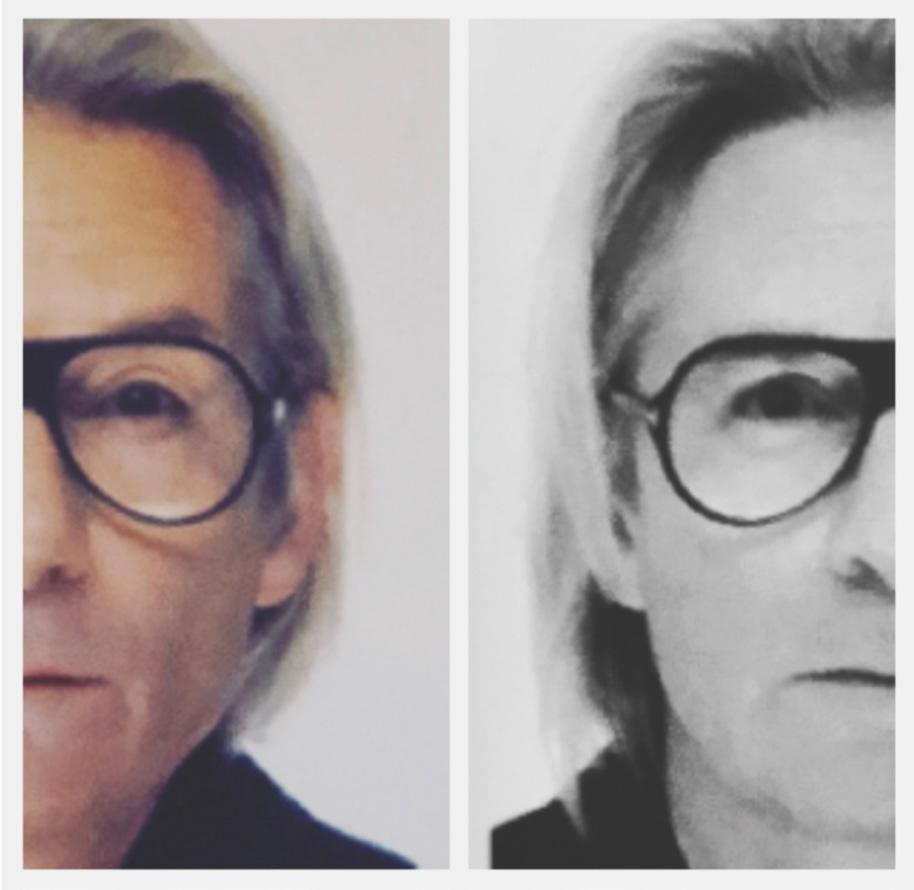
In this lecture, Mike Meiré reflects on four decades of practice at the intersection of art, branding, and cultural production. Drawing from his early influences in subculture and personal identity construction, Meiré examines how emotional and aesthetic instincts evolve into strategic design methodologies.
Through a series of case studies and personal insights, he explores branding not just as communication, but as a form of cultural authorship and self-invention.
Mike Meiré (born 1964) lives and works in Cologne with his wife and three children. In the mid-1980s, he co-founded the agency Meiré und Meiré with his brother Marc Meiré. In 2001, he launched the cultural production company NEO NOTO to further explore his fascination with the cultural dimensions of branding.
Since then, Meiré has collaborated with both national and international brands such as MINI, BMW, Telekom, Dornbracht, LAMY, and SPRIN-D, as well as with magazines operating at the intersection of culture and design. His interdisciplinary approach — dissolving boundaries between art, branding, and design — allows him to work fluidly as an art director, brand director, designer, curator, and artist.
As an art director, Mike Meiré has played a defining role in shaping the visual identity of numerous influential publications, including brand eins, 032c, ARCH+, BLAU International, GARAGE, and the NZZ. His projects reflect a deep engagement with aesthetic and cultural discourse, affirming his significance in the contemporary creative landscape.
Meiré has received numerous awards for his work, including the Visual Lead Award in Germany in 2006. In 2015, he was appointed an honorary member of the German Designer Club (DDC) in recognition of his lifetime achievements.

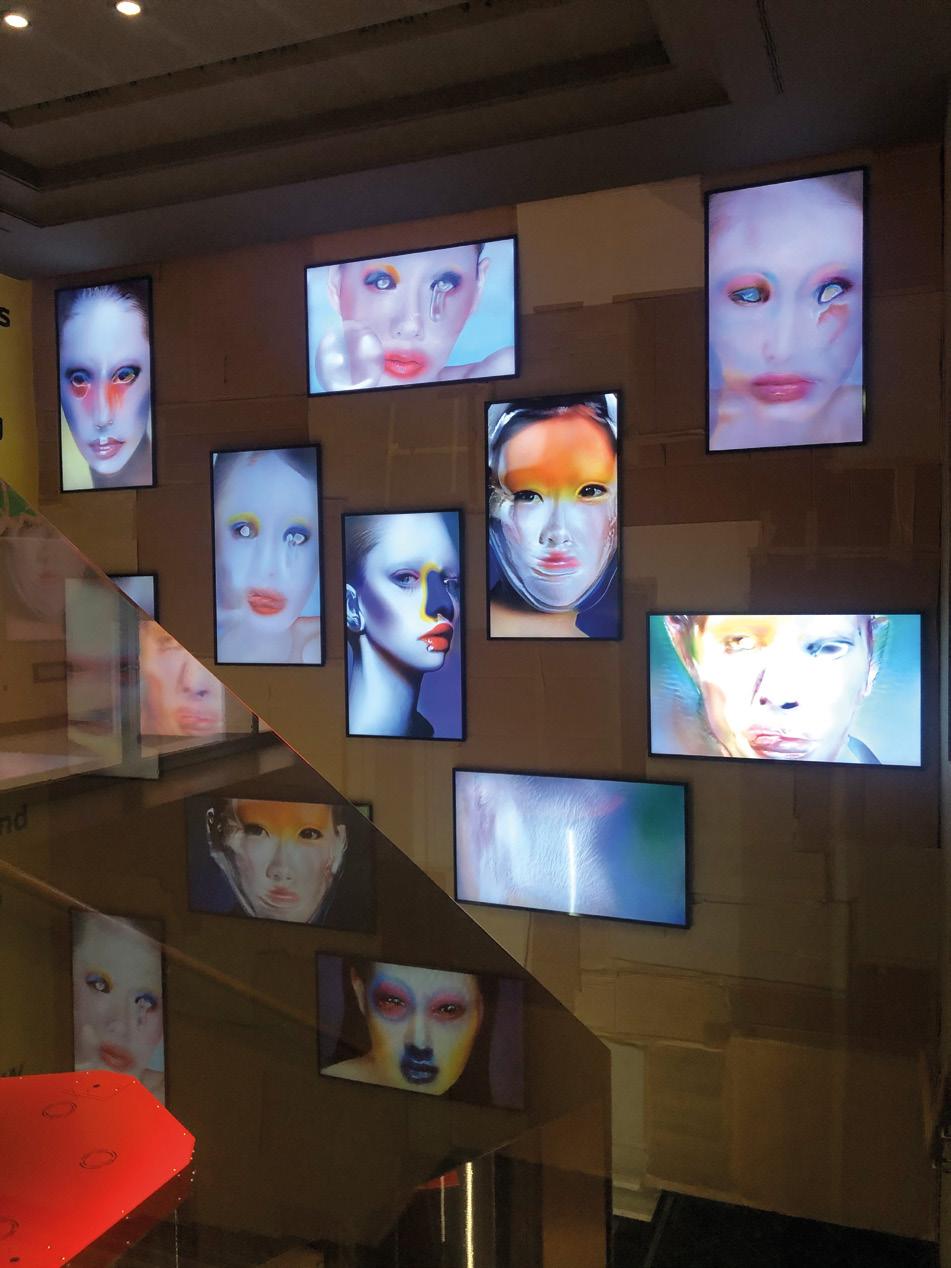
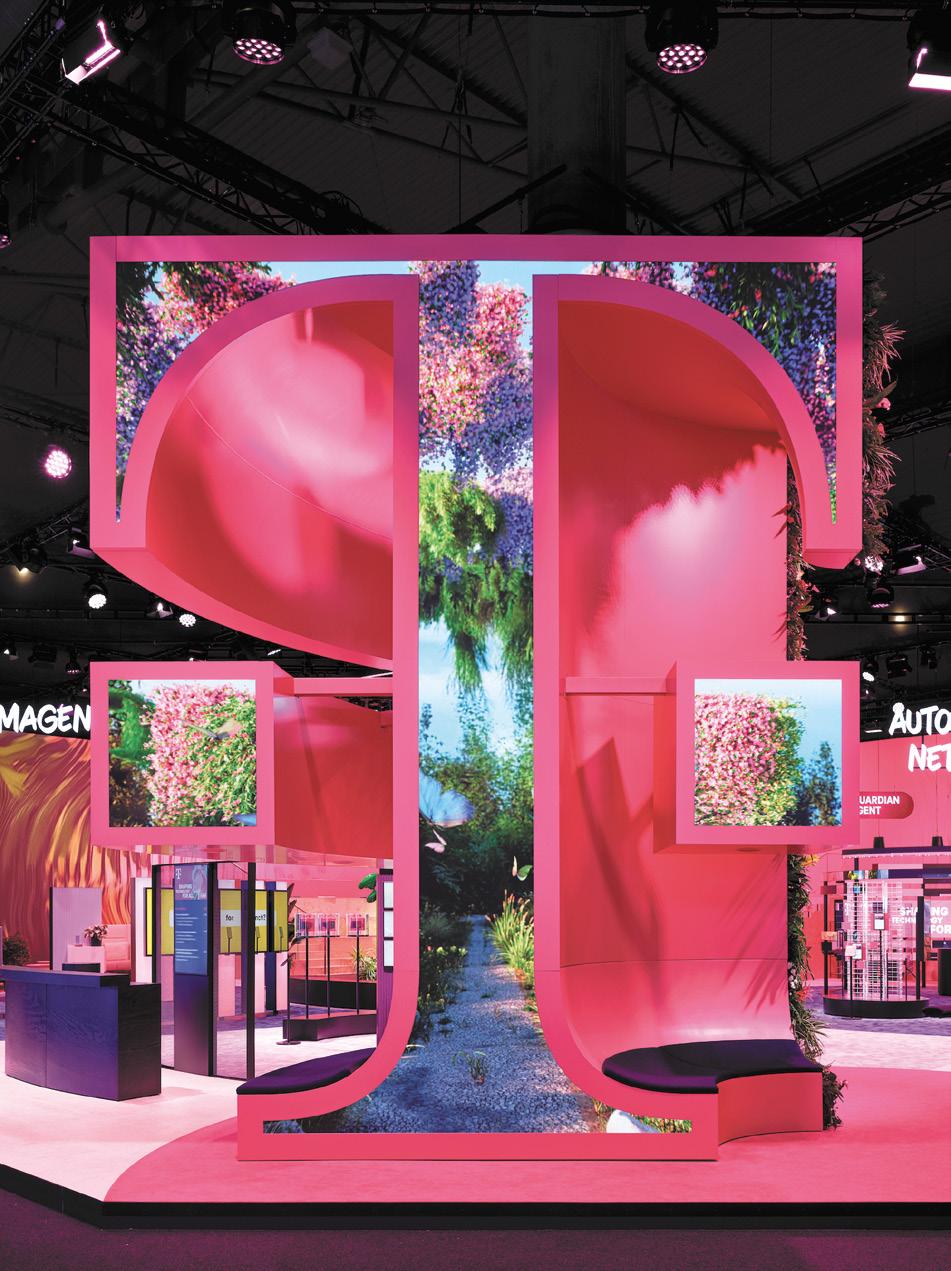
On the occasion of Salone del Mobile 2022, Mike Meiré curated a temporary exhibition and interactive program at the House of BMW. Invited artists explored Connectedness, Digitalization, and Circularity — the key values of BMW Group Design’s new vision on the road to the “Neue Klasse”. “Tales from a Neo Collective Future” translated this collaborative, transformative outlook on tomorrow into an experience for today.
Artists Claudia Rafael, Anna Deller-Yee, and fashion label BOTTER examined the human condition using a broad spectrum of methods, from hand embroidery to high-tech data analysis and upcycling techniques — where past meets future. Together with BMW and Mike Meiré in residence, they created an experimental space that opened new avenues for thought and action.


032c 40th Issue Berlin Winter 2021-22
The Island (KEN) created by New York-based artist collective DIS in collaboration with Dornbracht and co-designed by Mike Meiré, 2015
“The Island (KEN)” is a hybrid product that combines the (social) kitchen with the (private) bathroom. “By definition, KEN means ‘spiritual horizon’. I thought it was the perfect name for this hybrid unit, because it pushes our thinking, opens the mind, and questions our expectations of structures and everyday objects,” said Mike Meiré.
The installation was first presented at the New Museum Triennial 2015 “Surround Audience” in New York, followed by an exhibition and talk in 2016 at the Musée d’Art Moderne in Paris.
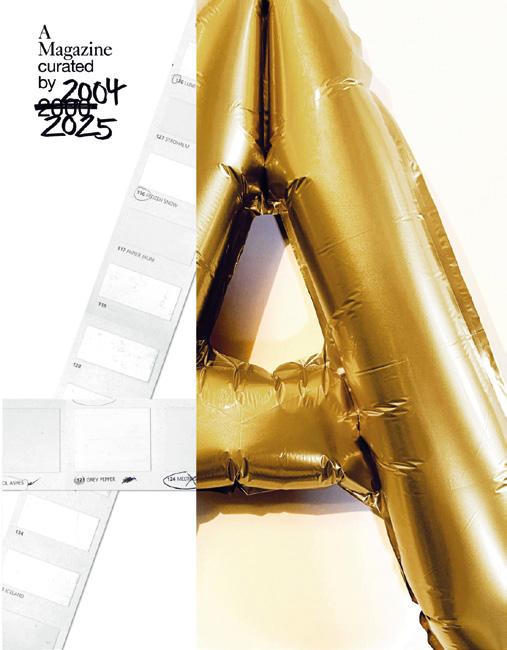
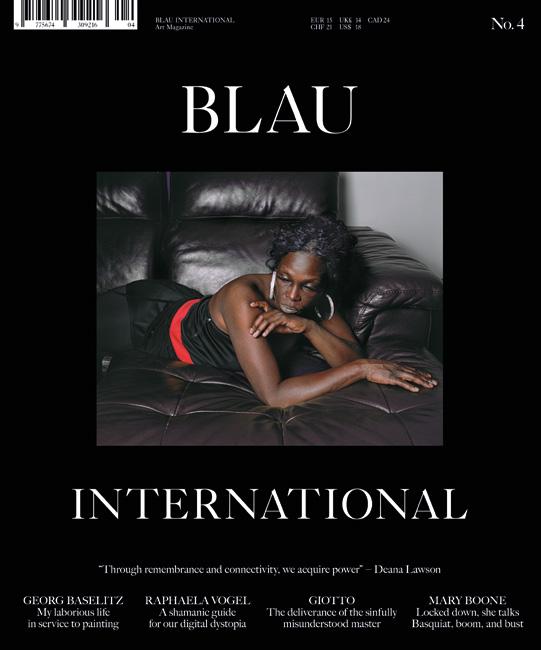
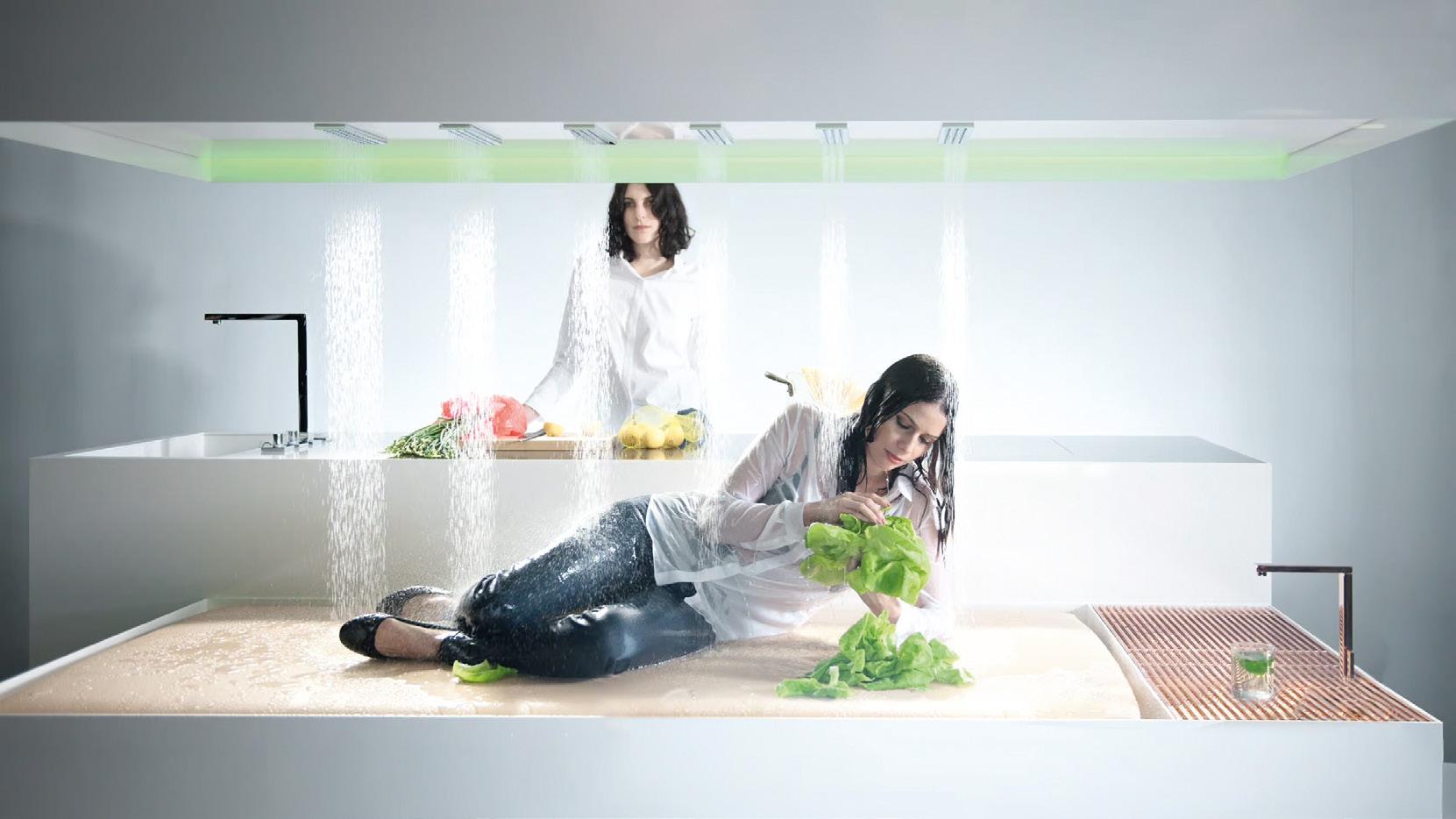
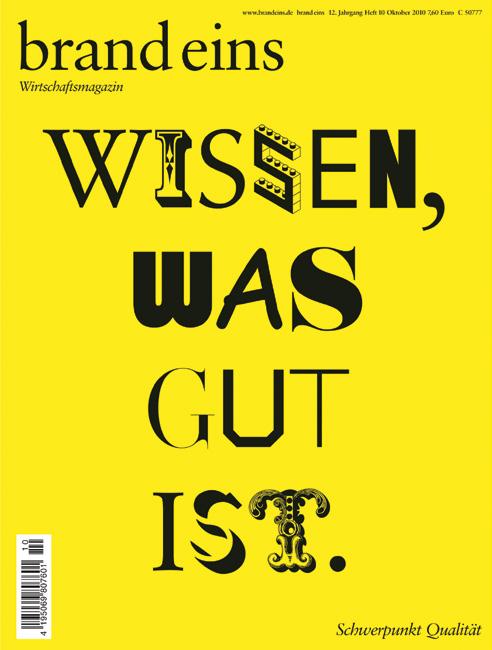



Dornbracht, The Farm Project, 2005
Dornbracht, a globally renownded premium manufacturer of fittings for bathrooms and kitchens, developed the series of Dornbracht Culture Projects under the direction of Mike Meiré. Following the theme of ritual architecture in the bathroom, Dornbracht turned to the kitchen as a space caught between functionality and emotionality. Mike Meiré created “The Farm Project” — a place that presents the kitchen as a stage of life, a permanent “making-of”, a workshop for the senses.
“The Farm Project is not a decorative idea, but an attitude, a belief — a call to the alternative,” explained Mike Meiré. “For years, we’ve felt this incredible urge to design everything, which has caused us to lose so many interesting, beautiful, and enchanting things, especially in the kitchen.”
The project was part of the brand series of explorations at the intersection of architecture, design, and art. It was first shown at the Salone del Mobile 2006 in Milan and subsequently exhibited at “Passagen” during imm cologne 2007, the “sculpture projects muenster 07”, and “Design Miami”. A detailed publication was released by the Walther König bookstore publishing house.
EVA CREMERS NL
Step into a joyful 3D world where Eva Cremers will share her journey of accidentally becoming a successful 3D artist and director. Through her early and recent work she comes armed with an honest talk, filled with insights on her bumpy high speed journey through the Creative Wild West.
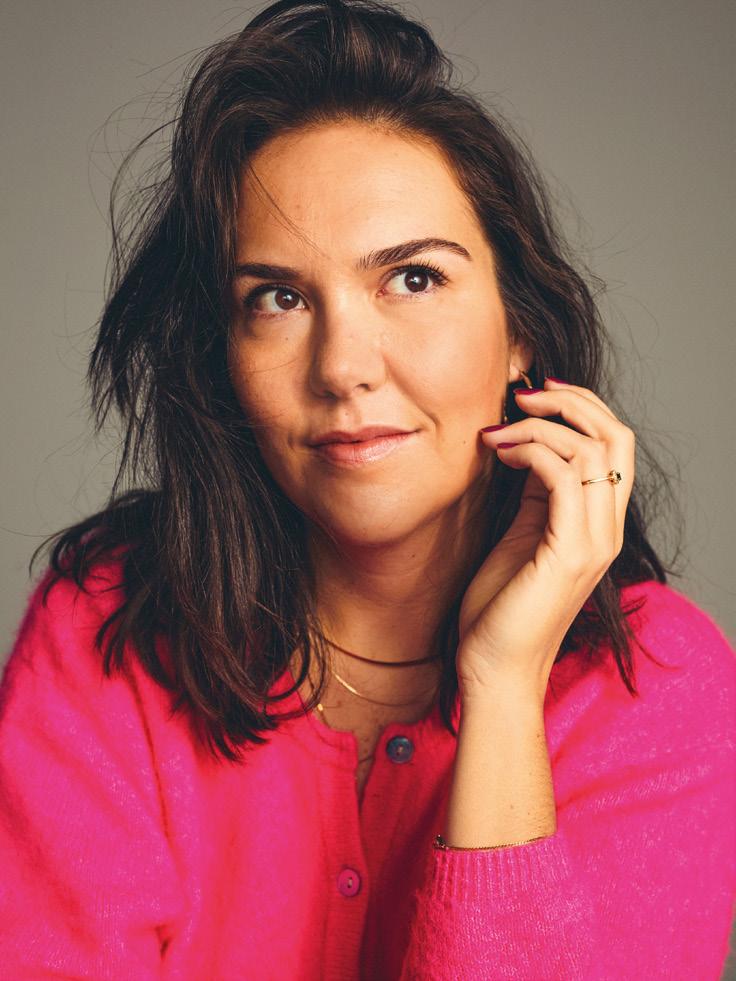
Eva is a 3D Artist and Animation Director from The Netherlands. Her playful, graphic CGI style combines with her unique design sensibility to create charming, joyful worlds of fun.
Adorning a multitude of different mediums, her signature elements and characters can be found in the form of digital art, sculptures, murals and apparel, for a growing list of global clients including H&M, Meta, McDonald’s, Apple and Samsung.
She aims to create work that sparks joy and brings huge smiles on people’s faces!
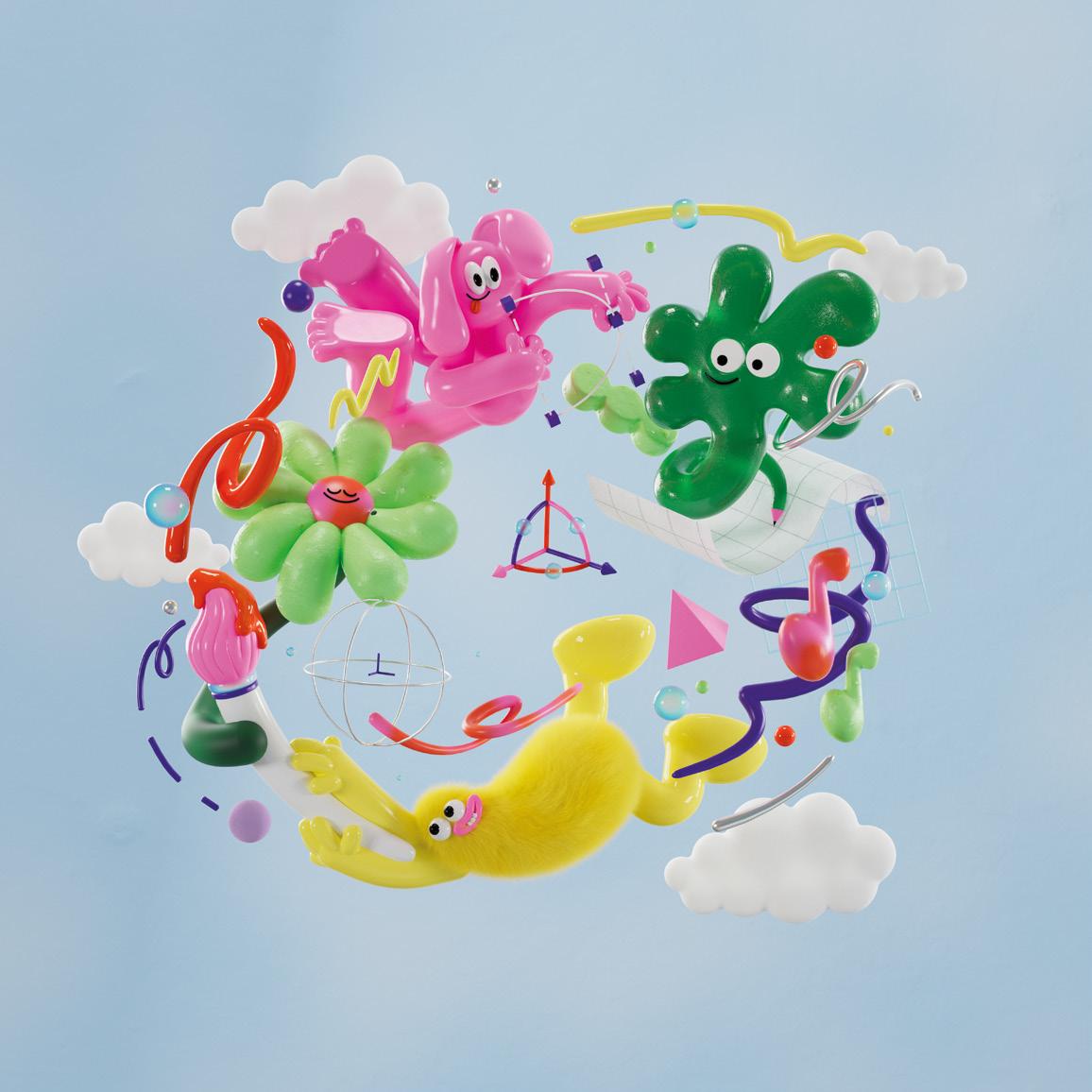
Looping animation for the Apple App Store, specifically for the Apple Vision Pro. This key artwork was used for the app collection called “Create on an Infinite Canvas”, highlighting different apps to spark your creativity from music to painting.
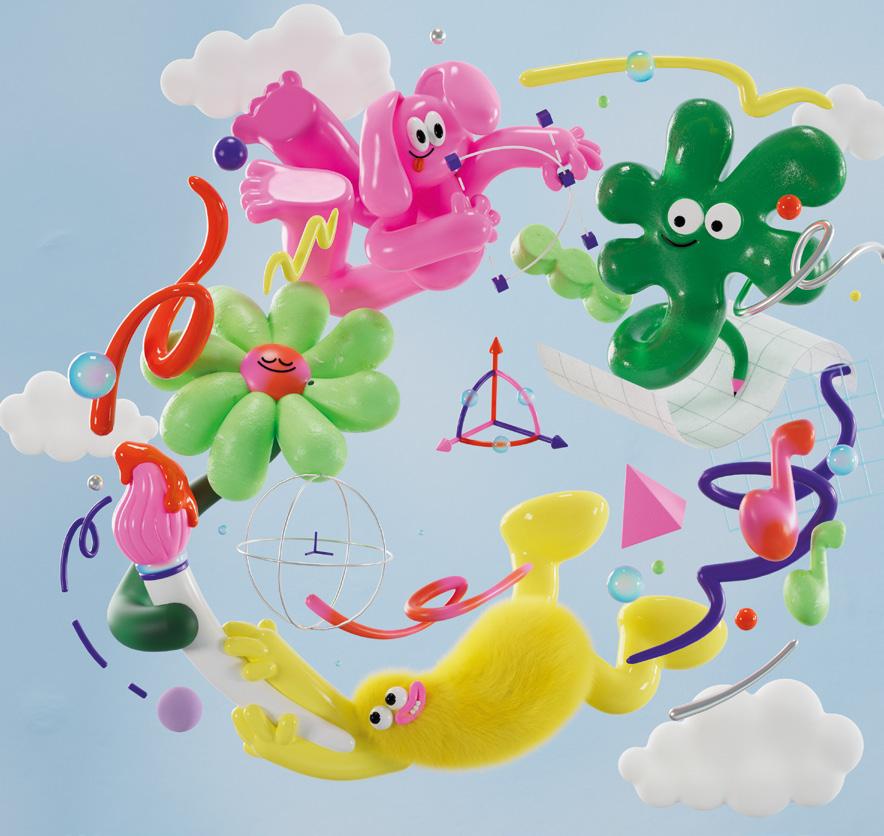
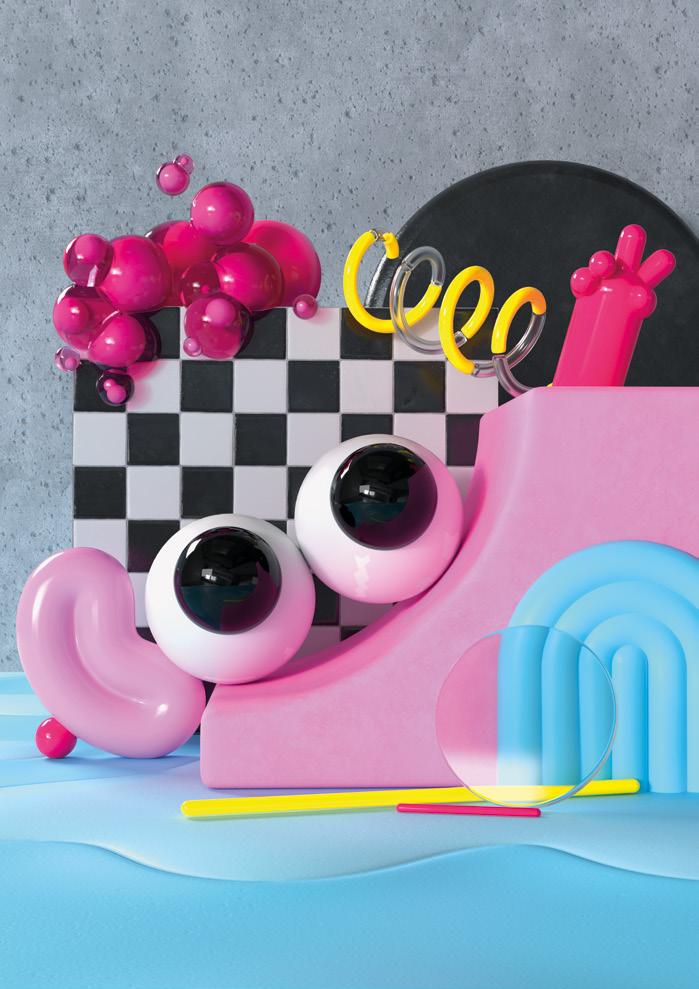
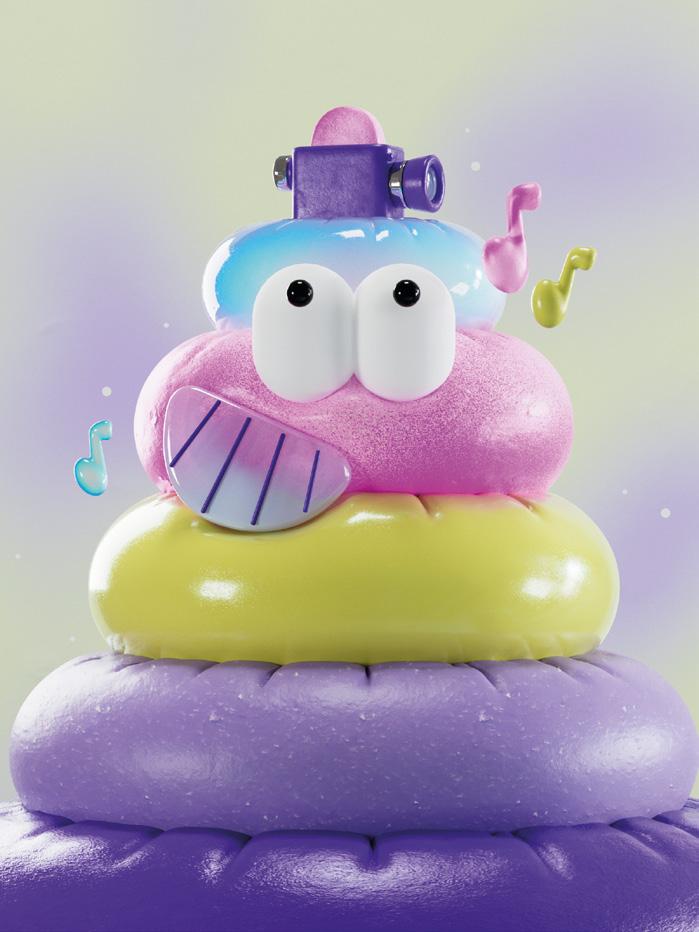
Both artworks were created “after hours”. I love to experiment with shapes, lighting and textures to push my work in new directions.
Artwork for ON x Roger Federer shoes. These sporty everyday sneakers came in 5 different colors of soles and I created 5 different worlds for the shoes to live in. I also created a 30” video ad, adding in fun little tennis hints throughout.


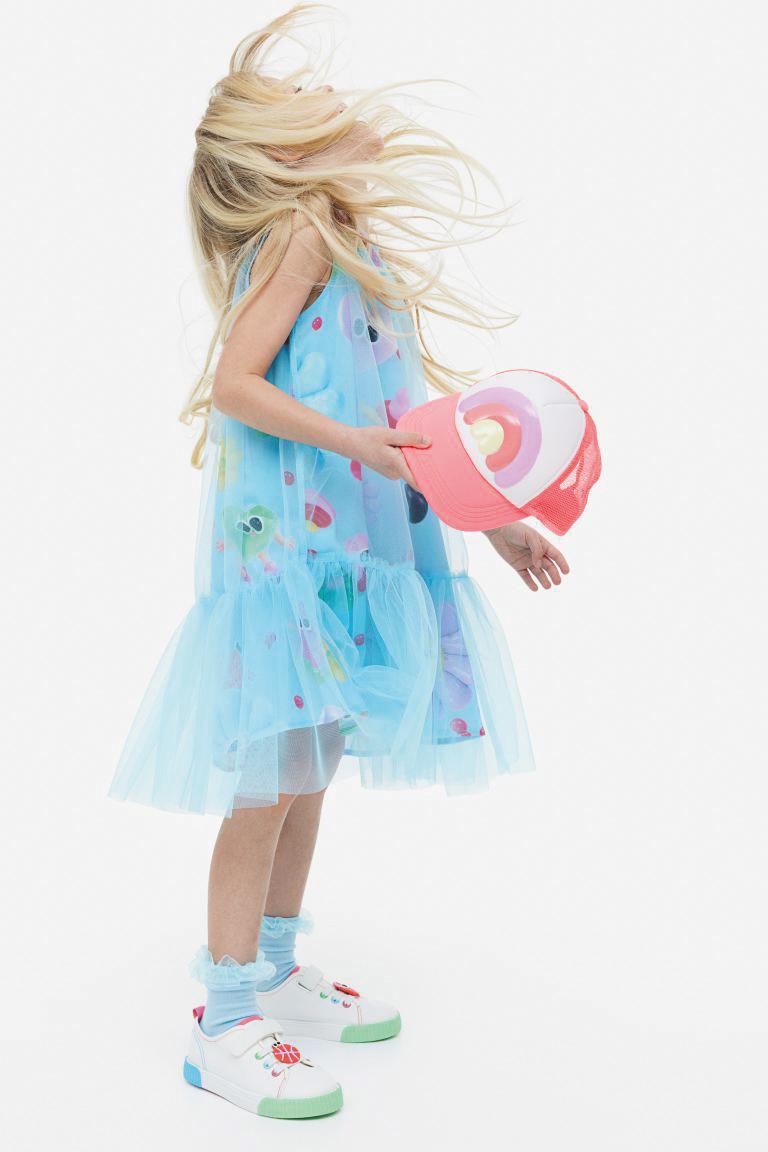
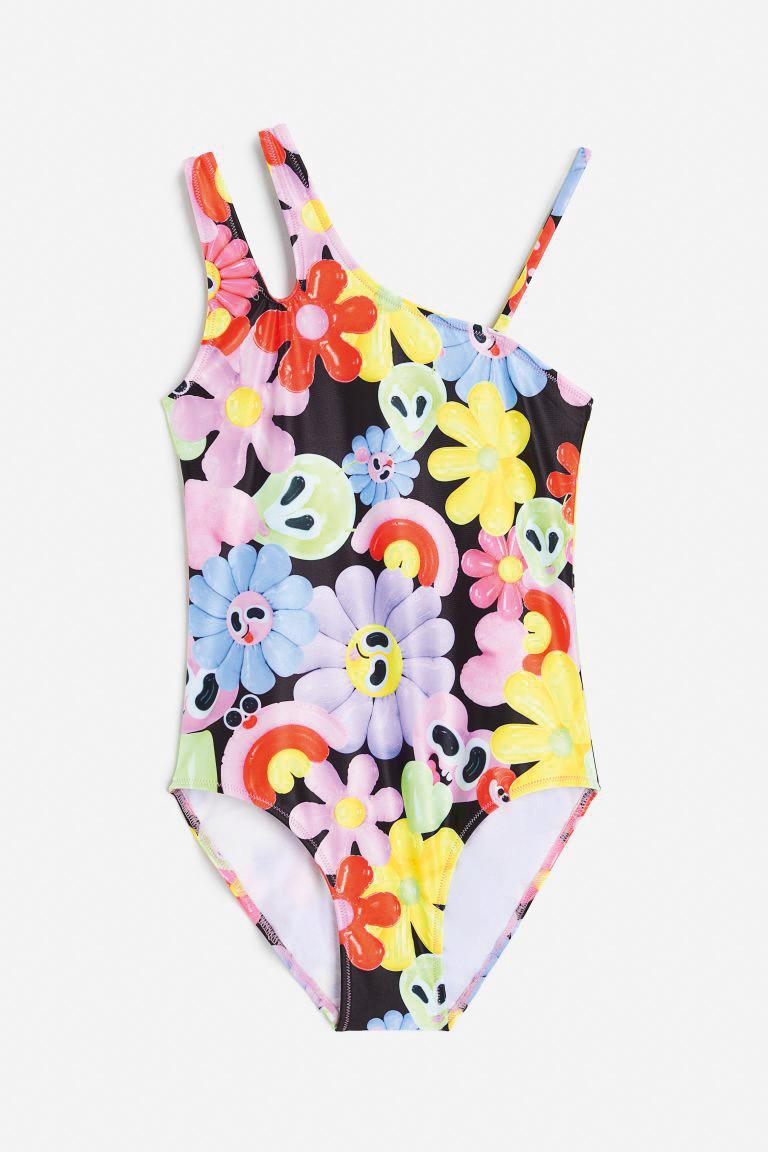
These images are from my H&M x Eva Cremers spring collection in 2023. Together with the H&M team we created everything from shoes to swimwear, dress and jackets and bracelets and caps for ages 0-14. It was incredible to see it all in shops around the world, together with big window displays celebrating the collaboration!
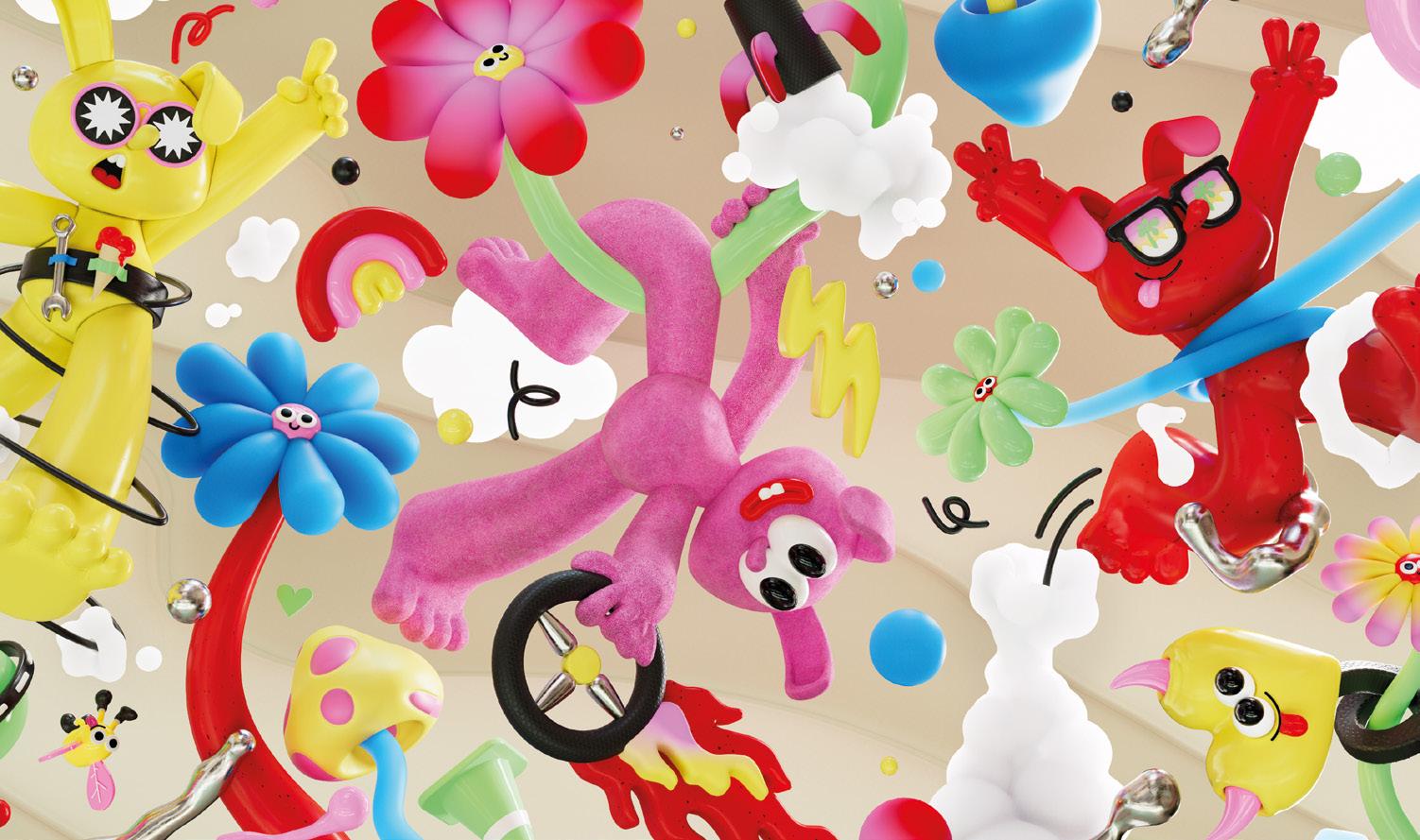
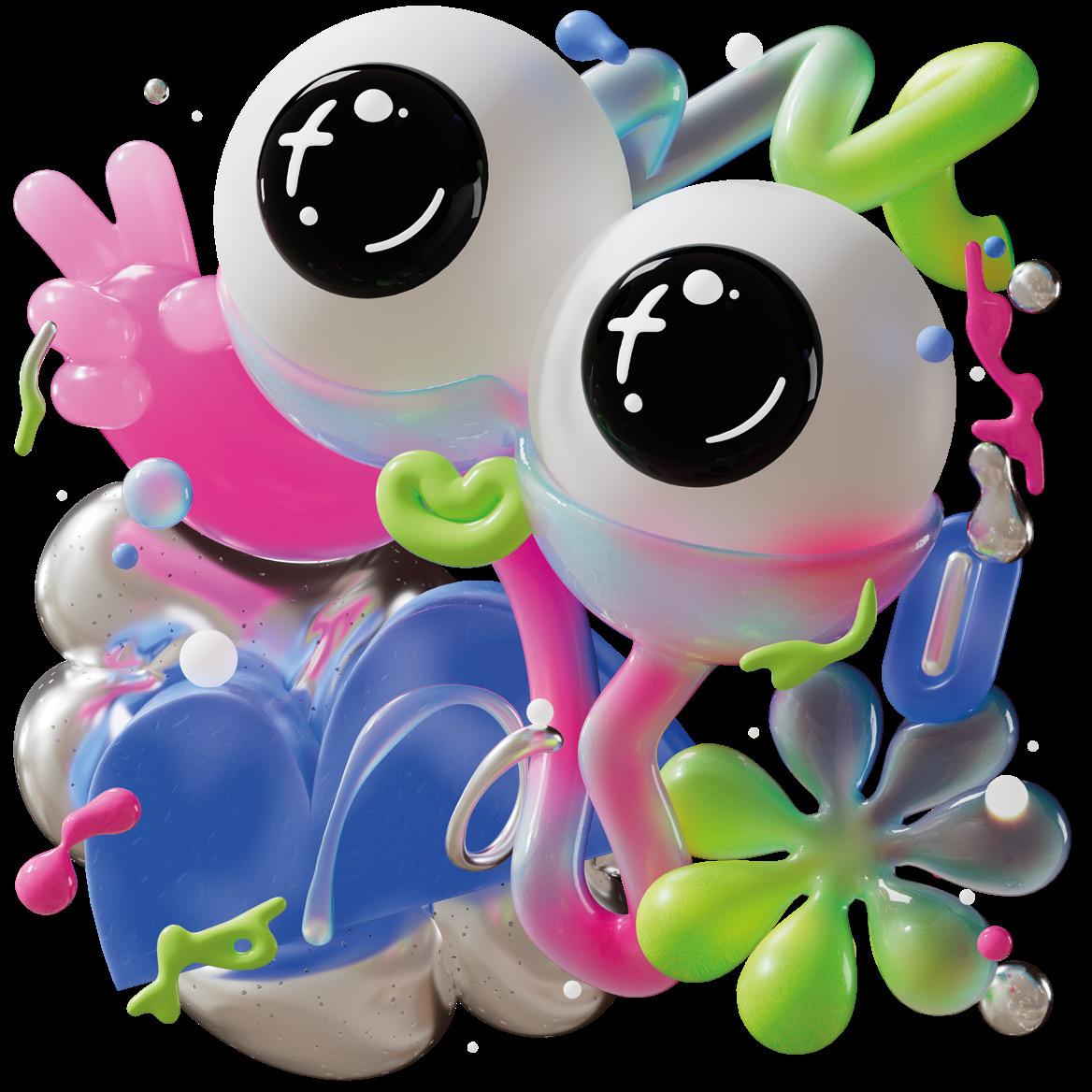
EIKO OJALA EE
Layers
Eiko Ojala is an internationally recognized Estonian illustrator whose work stands out for both its technical precision and conceptual sensitivity. He studied interior architecture and worked for several years as a graphic designer, which has left a clear mark on the spatial awareness and minimalist style of his illustrations. Ojala creates most of his work digitally, yet he draws every detail by hand, focusing on simple forms and the subtle interplay of light and shadow. Both his illustrations and his creative process are characterized by layering — the works resemble paper cutouts stacked in depth, inviting the viewer to dive deeper into the visual narrative. Conceptually, however, Ojala’s creative process can be described as a constant act of reduction — he removes all unnecessary layers and meanings to reach the core of each idea. The result is a minimalist, precisely composed style where every element carries meaning.
Ojala gained early and decisive international recognition in 2013, when he won the prestigious “Young Gun” award in the Art Directors Club competition. This became a springboard for his international career, followed by several other notable accolades, including the Communication Arts Illustration Annual (2014), American Illustration, and the YCN Professional Award. He has created illustrations for some of the world’s leading brands and publications, such as Apple, Herman Miller, the V&A Museum, The New York Times, National Geographic, Le Monde, and The New Yorker — testament to the broad resonance and impact of his work within the global visual culture.
ILLUSTRATION DESIGN
Eiko Ojala’s work has also been exhibited internationally in renowned galleries and venues, including Pocko Gallery (London), Spoke Art (San Francisco), Pelham Art Center (New York), Atelier Meraki (Paris), Art Kaoshung (Taiwan), and the ING Creative Festival (Dubai). His pieces have been part of both solo and group exhibitions, showcasing his distinctive, finely layered artistic language. His work is also featured in numerous international publications and anthologies, including multiple appearances in TASCHEN’s prestigious 100 Illustrators book.
Ojala’s minimalist and conceptually precise visual language has become an essential part of the contemporary illustration landscape, as he continues to develop a body of work in which each new piece reveals new layers, both aesthetically and conceptually. His evolving practice reflects a deep commitment to clarity, craftsmanship, and the exploration of form, offering viewers a rich and thoughtful visual experience that helps navigate today’s complex and often contradictory world.
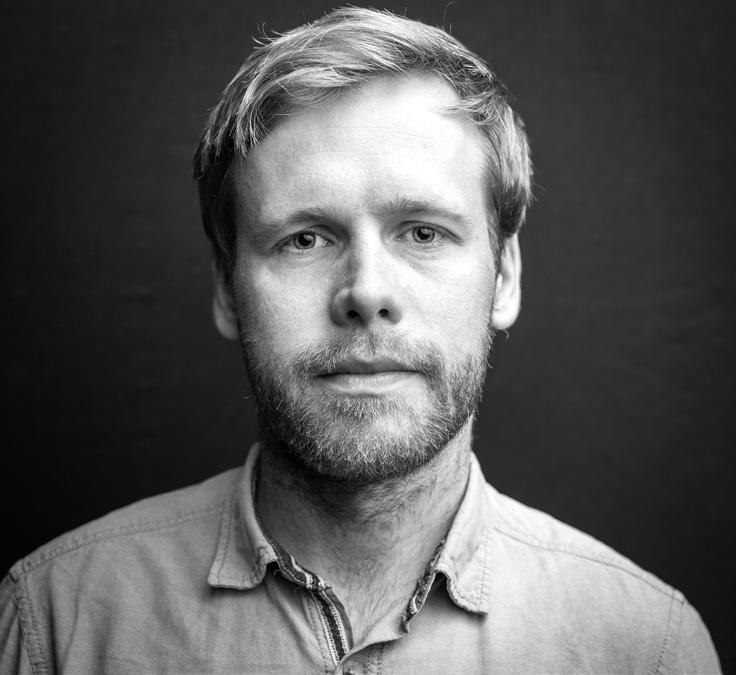
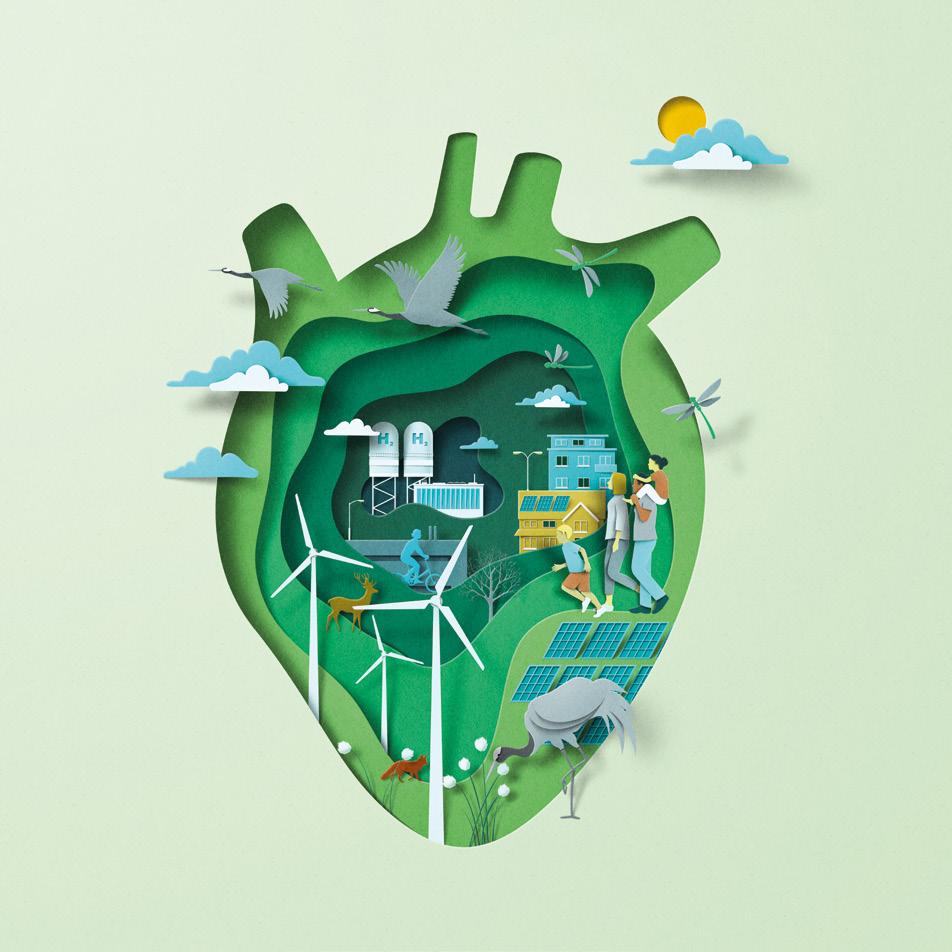
Limited edition prints to explore the role of the myths in contemporary society
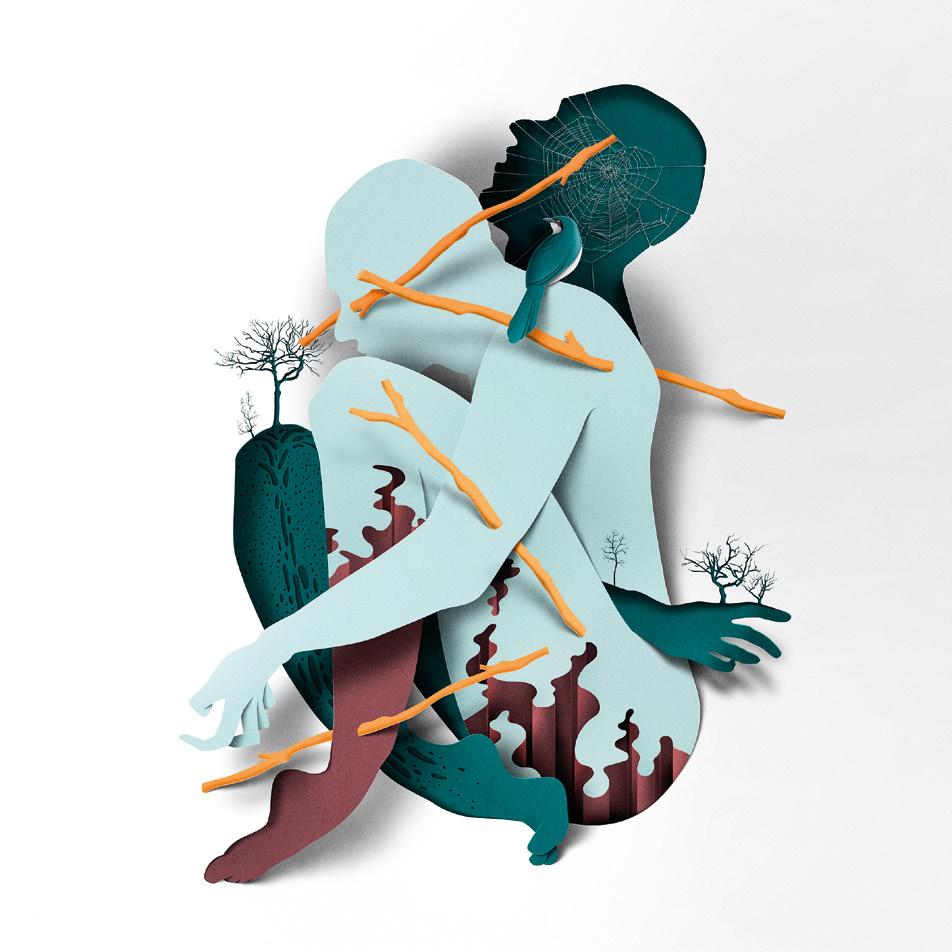
Let
not
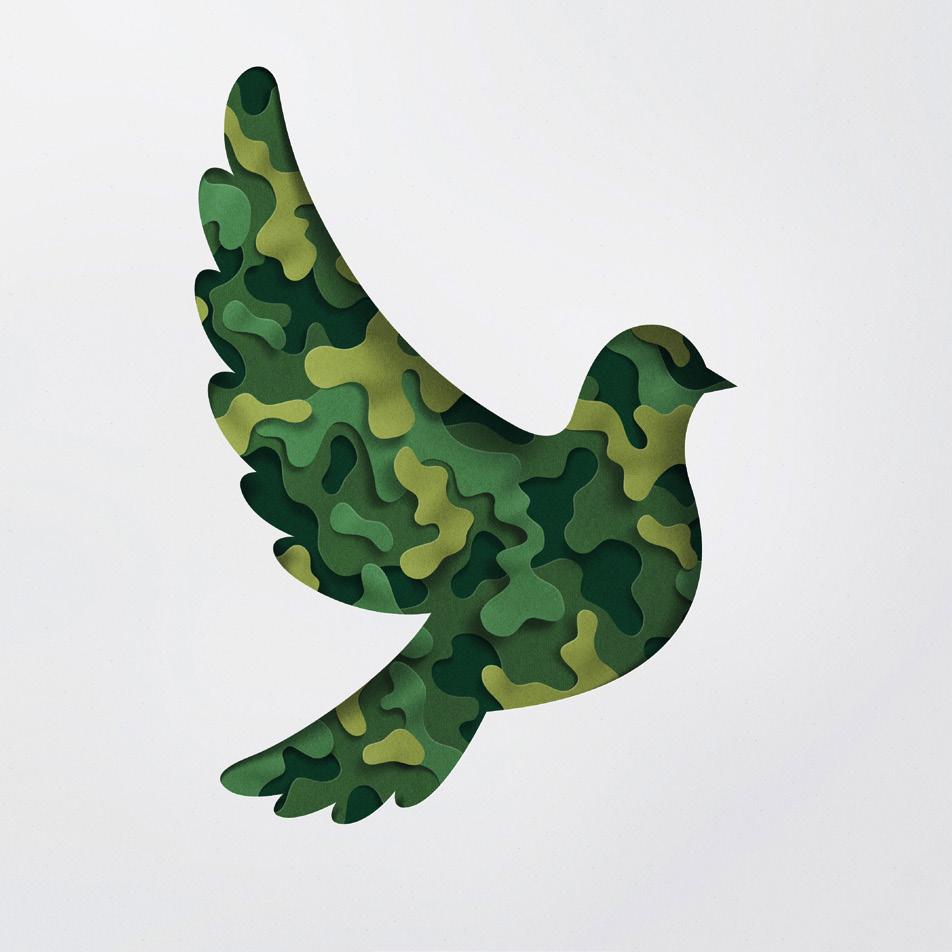

Hug 1
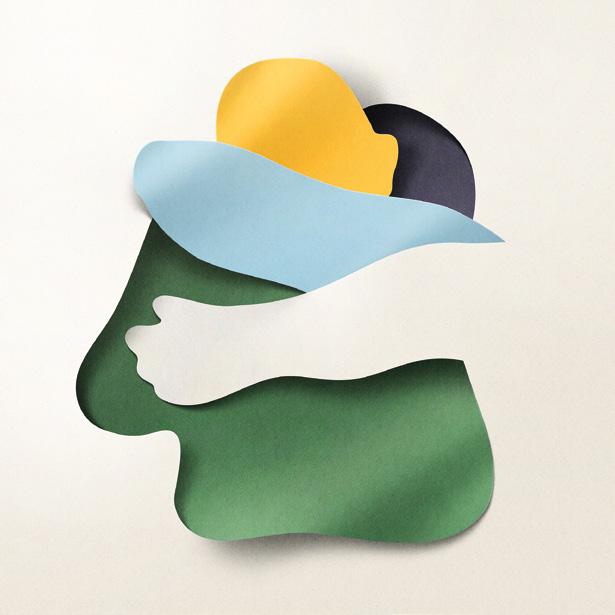
Hug 3
Limited edition prints to support @peaasi.ee which focuses on mental health of Estonian youth, 2020

Hug 2
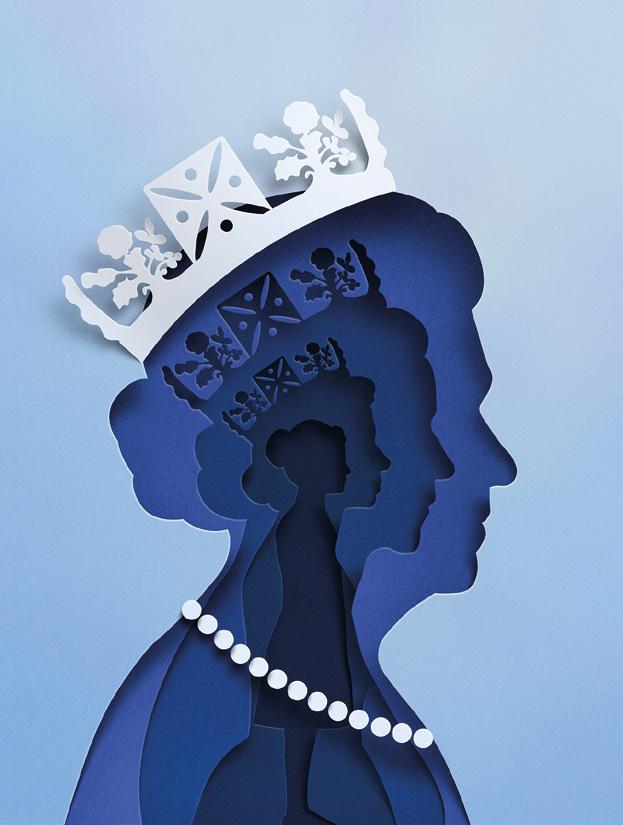
Should we ban the smartphones for teenagers — For Guardian books, 2024
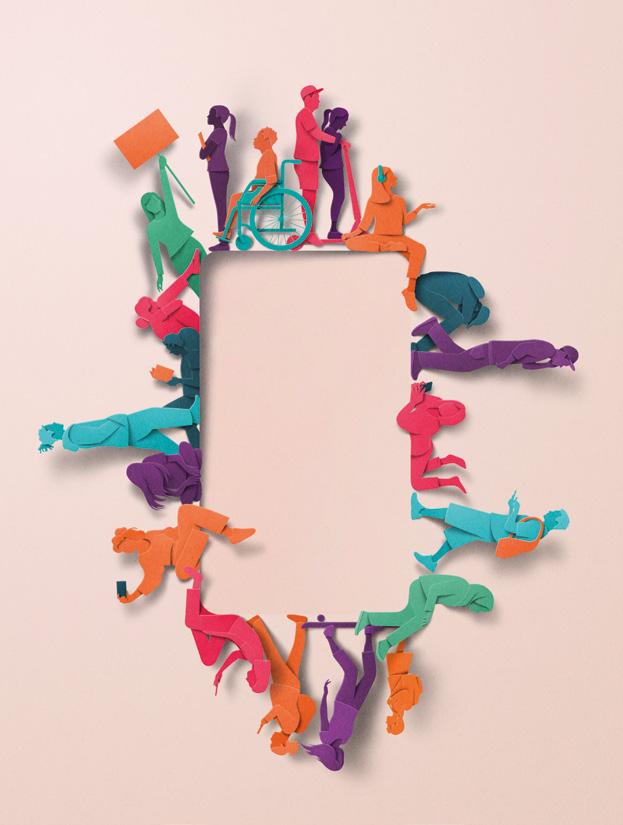

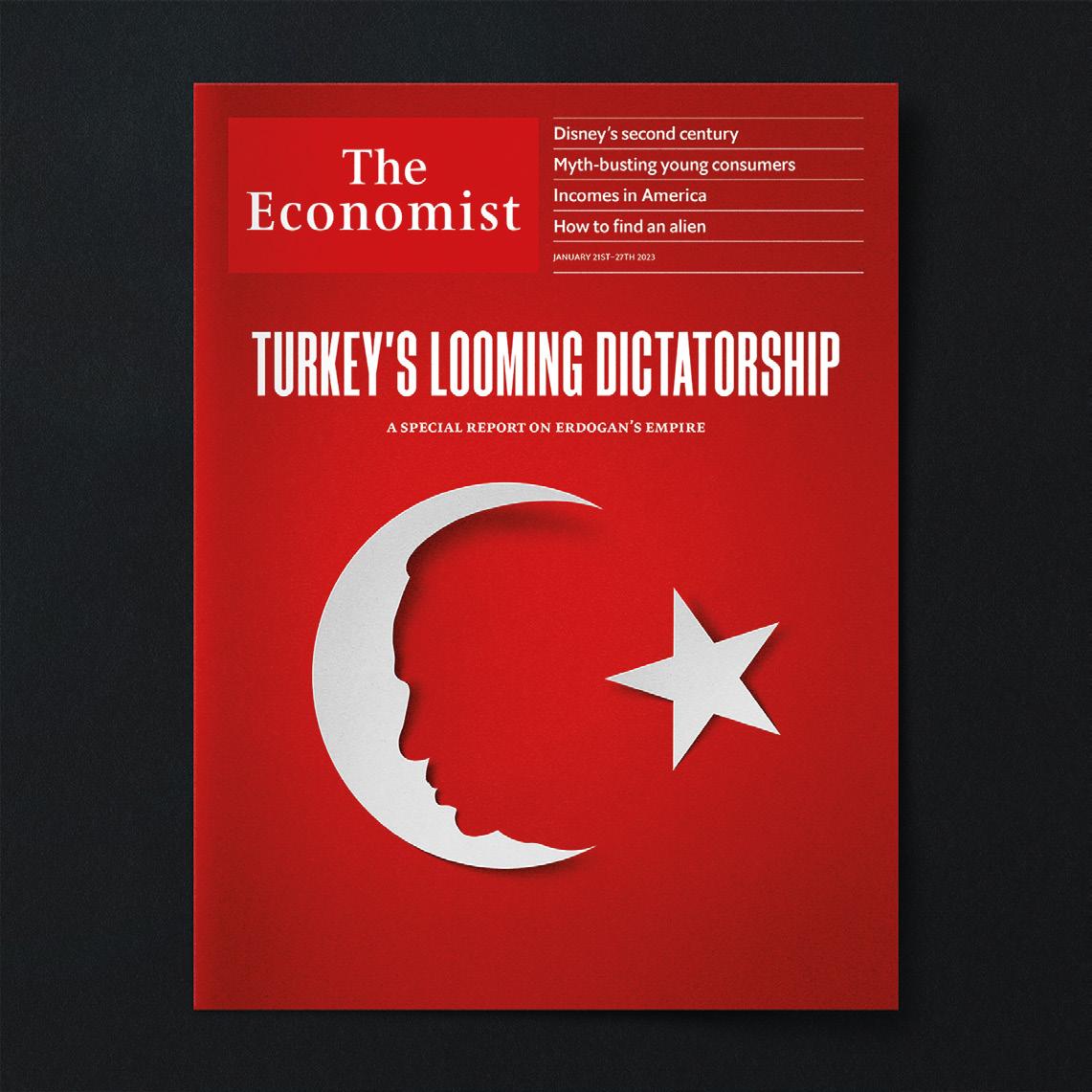
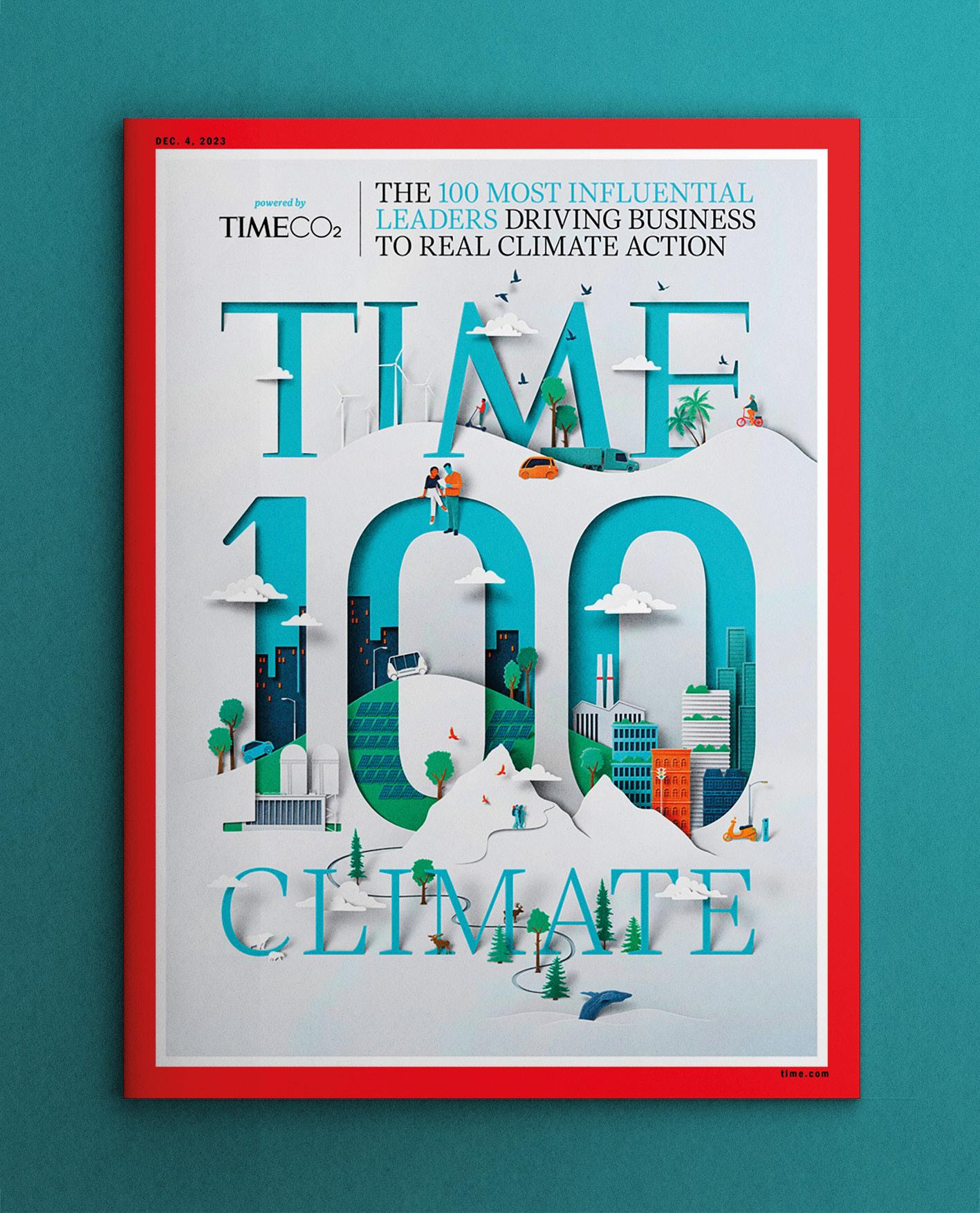
PEARSON LLOYD UK
Embracing uncertainty
Perhaps more than at any time before, the forces reshaping our world span every sphere of life, from environmental collapse and transformative technologies to divisive politics and economic instability. This talk by Pearson Lloyd explores how design helps us to embrace uncertainty as an opportunity to balance the social, environmental and economic impacts of human activity.
Luke Pearson and Tom Lloyd established their London-based studio in 1997 after meeting at the Royal College of Art, where they studied Industrial Design and Furniture Design respectively. From the beginning, their partnership was shaped by duality: Luke was drawn to the poetry of form and efficiency, while Tom was fascinated by how furniture defines space and shapes behaviour. Over time, they influenced each other, finding common ground in a shared belief that function, form and feeling are inseparable.
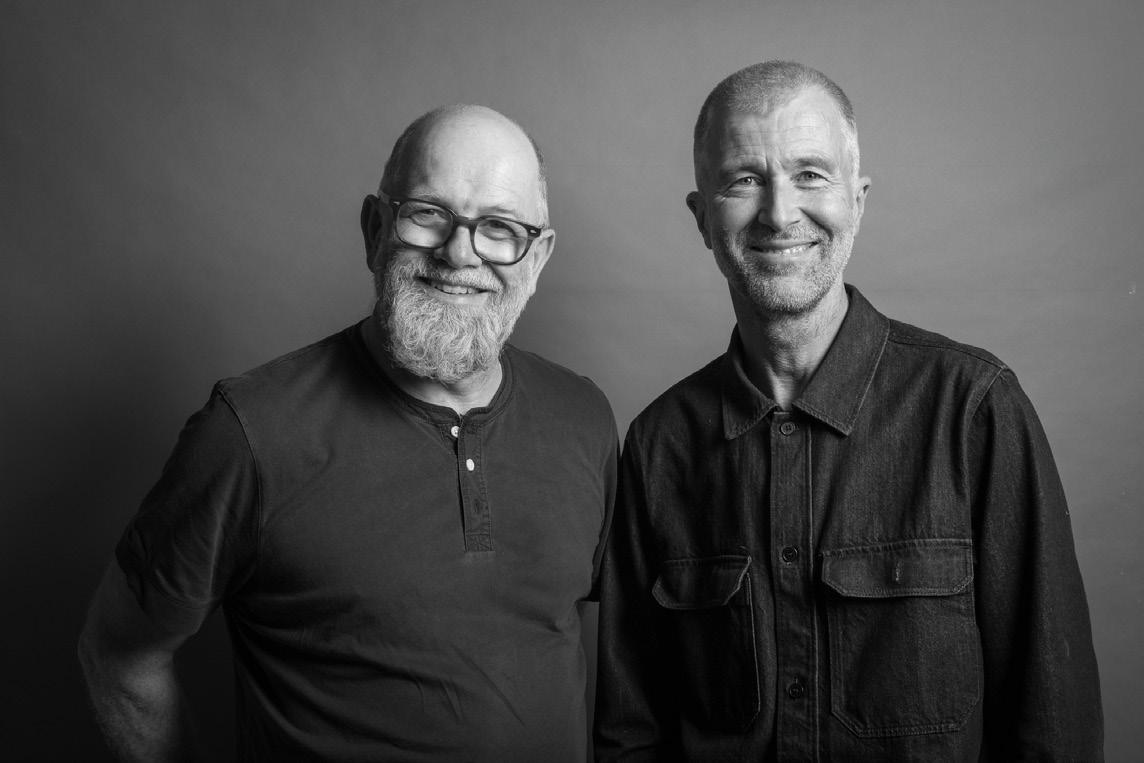
PRODUCT DESIGN
That dual sensibility — tactile and spatial — continues to underpin their work. Over the years, Pearson Lloyd has earned an international reputation for designs that are both elegant and efficient, rational yet poetic. They are most at home working at the scale of industrial production, where beauty emerges from purpose.
Their work has been recognised with numerous accolades, including Designer of the Year by Dezeen, and inclusion in Fast Company’s list of the top 50 designers “Shaping the Future”. They teach at the Royal College of Art in London and ECAL in Lausanne. Both founders have been named Royal Designers for Industry — the UK’s highest design accolade. Pearson Lloyd’s exhibitions Material Change and Well Made have further articulated their commitment to thoughtful, enduring design through material culture, process and making.
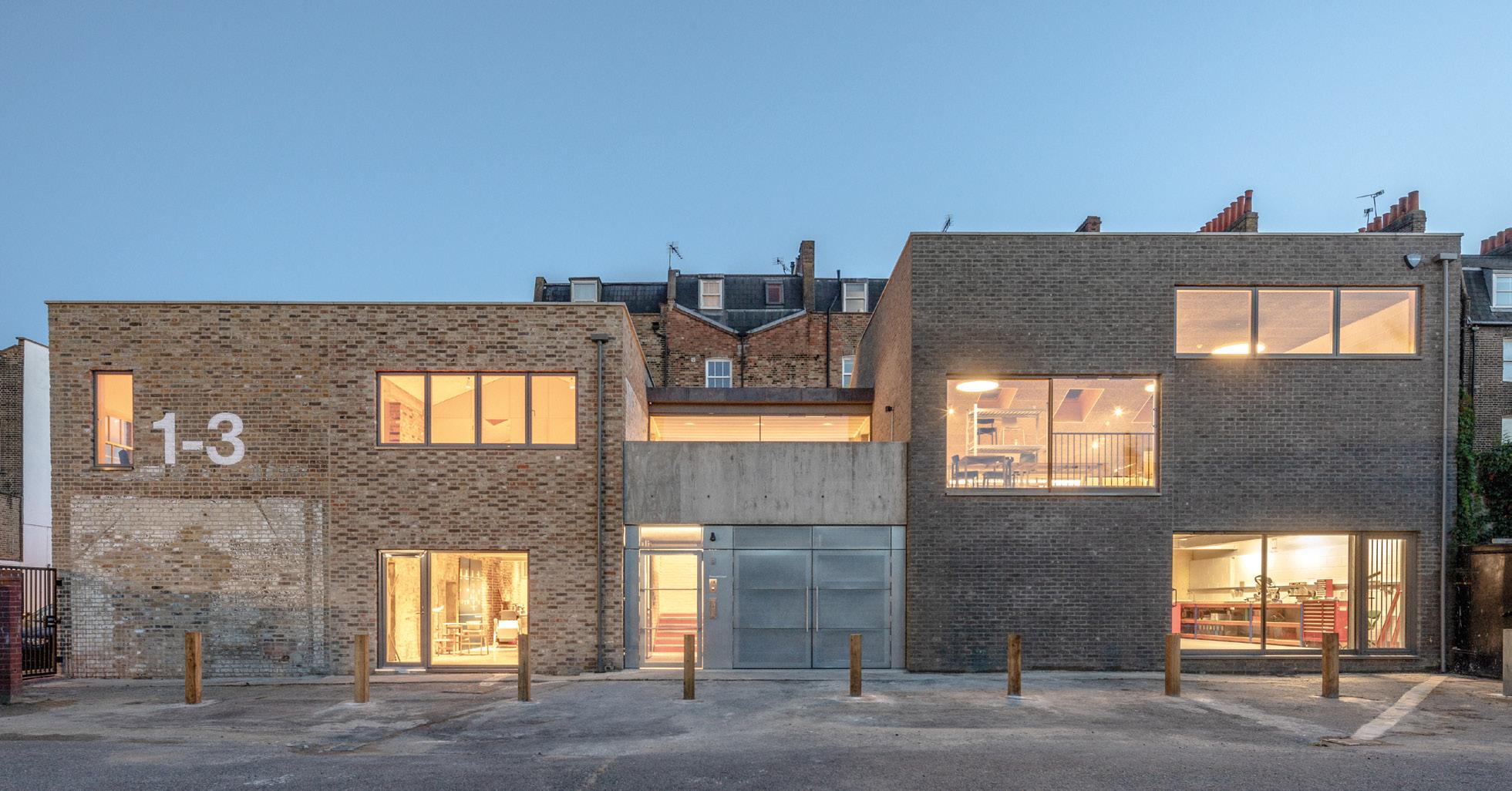

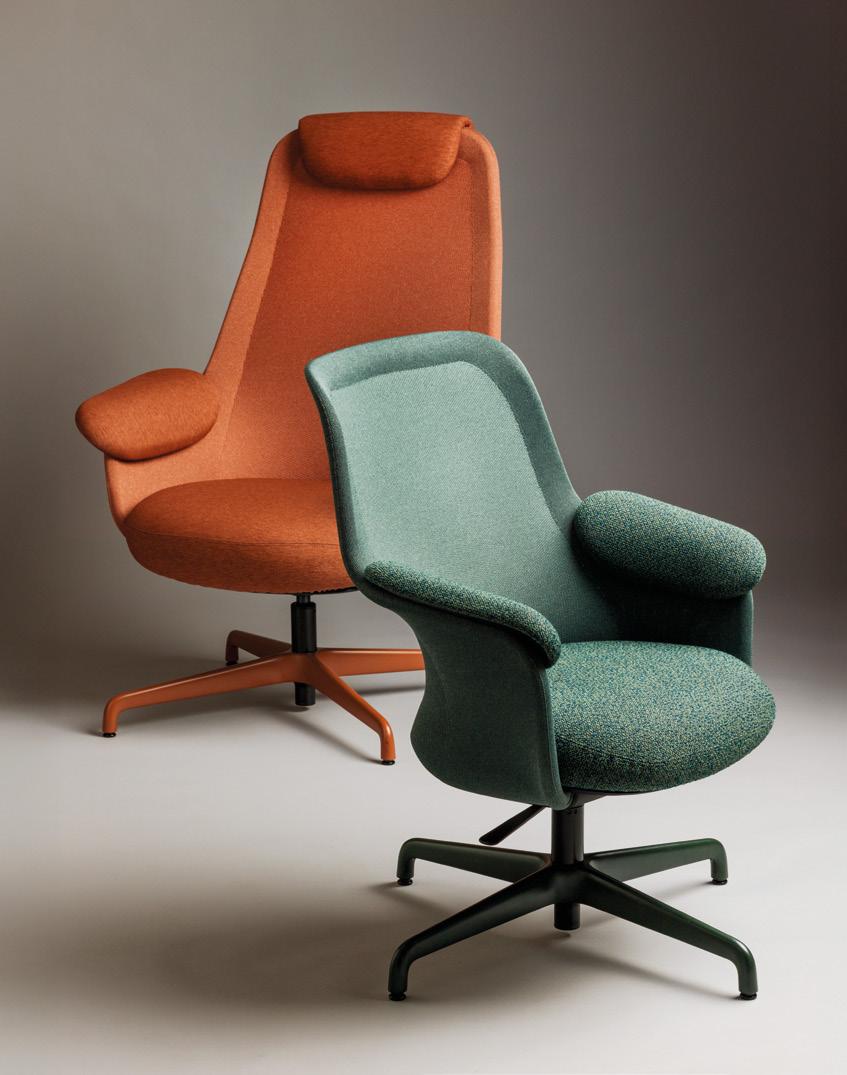
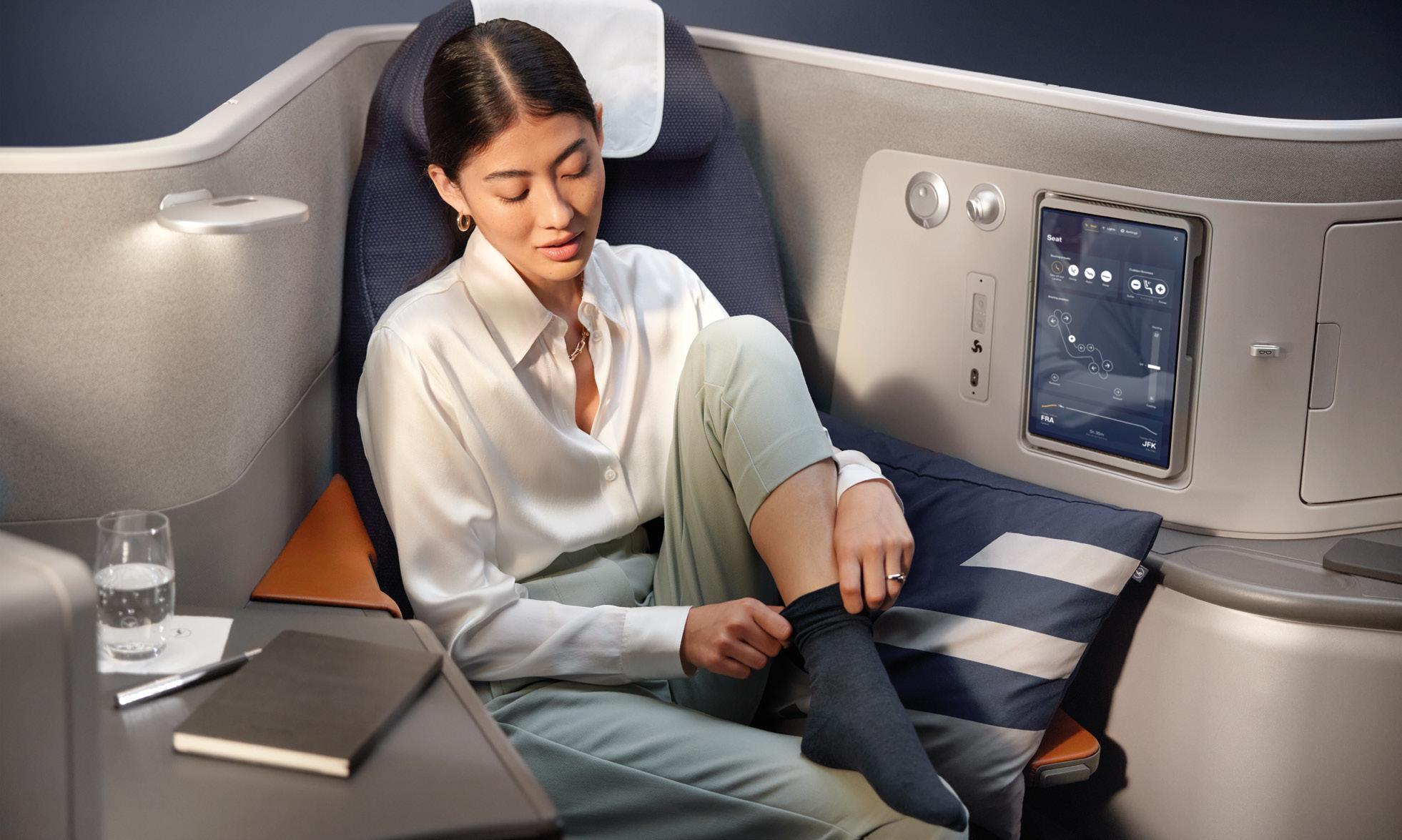
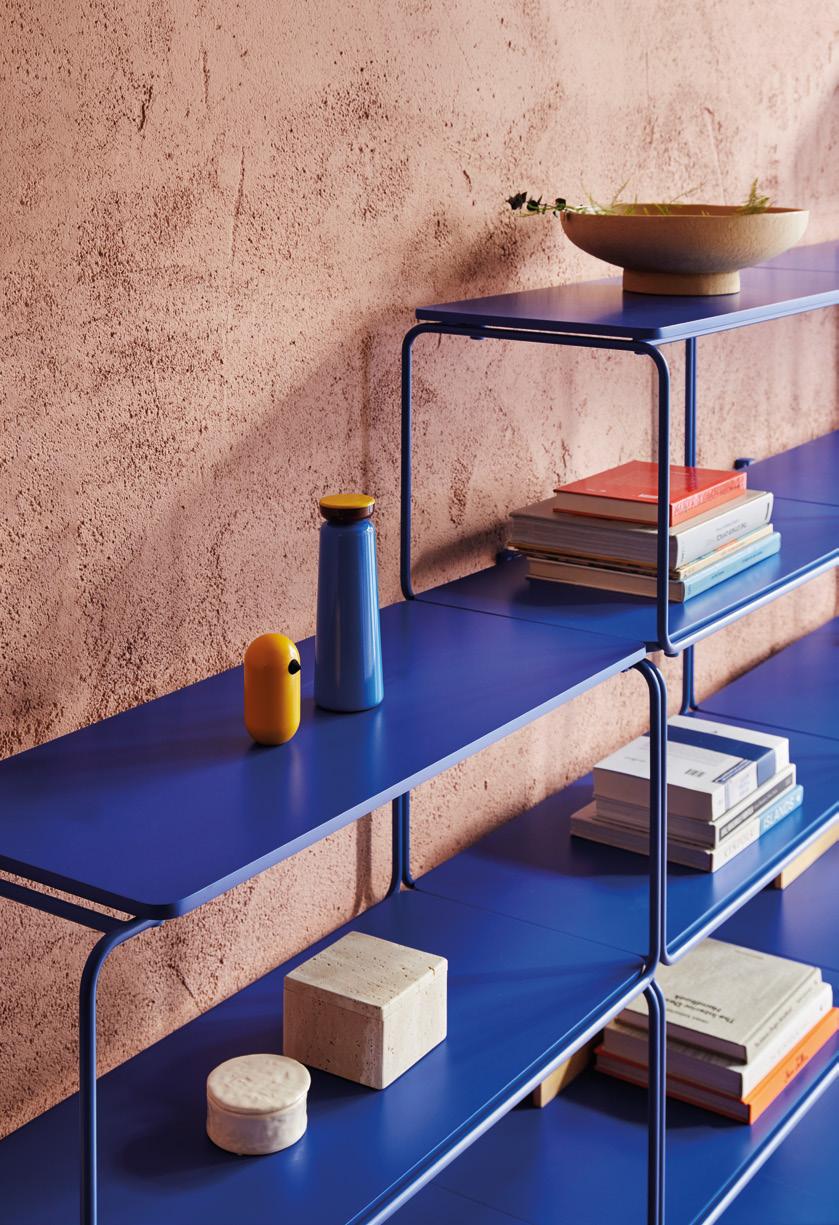
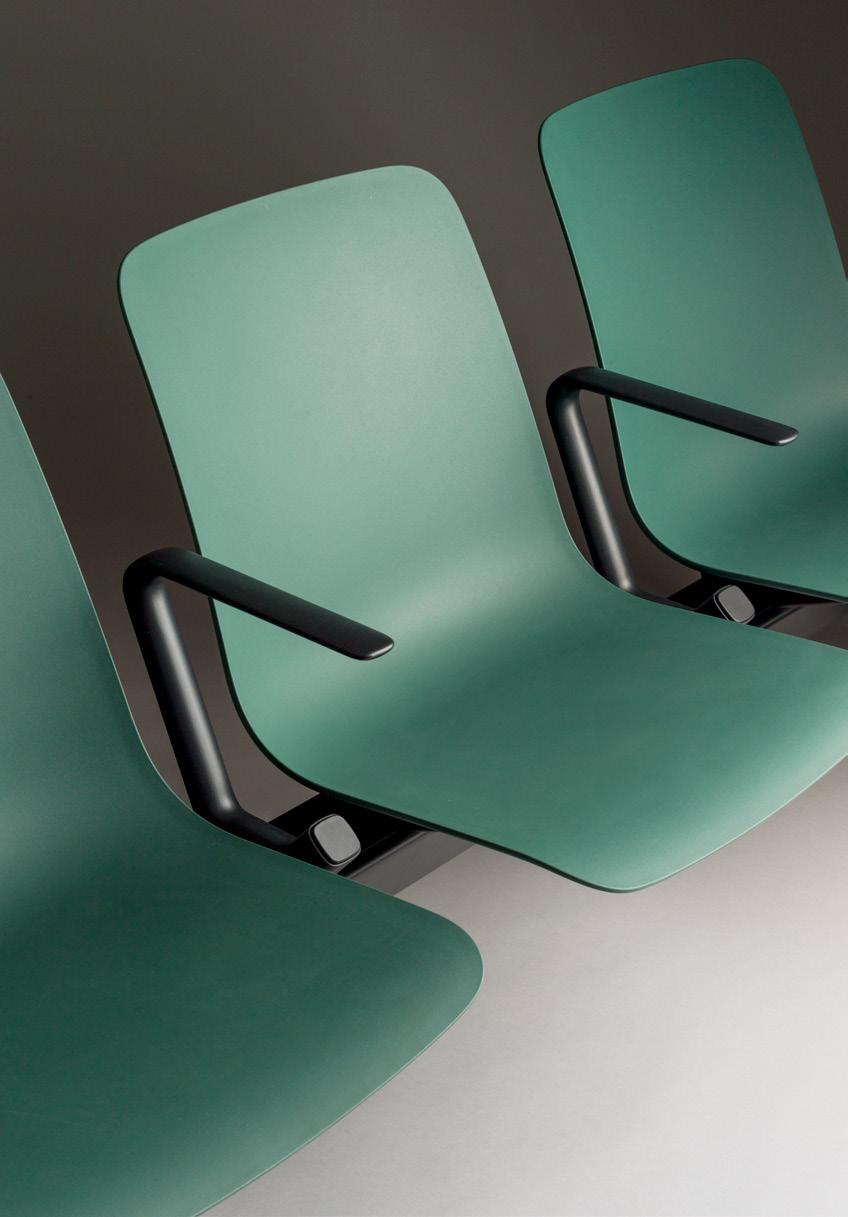

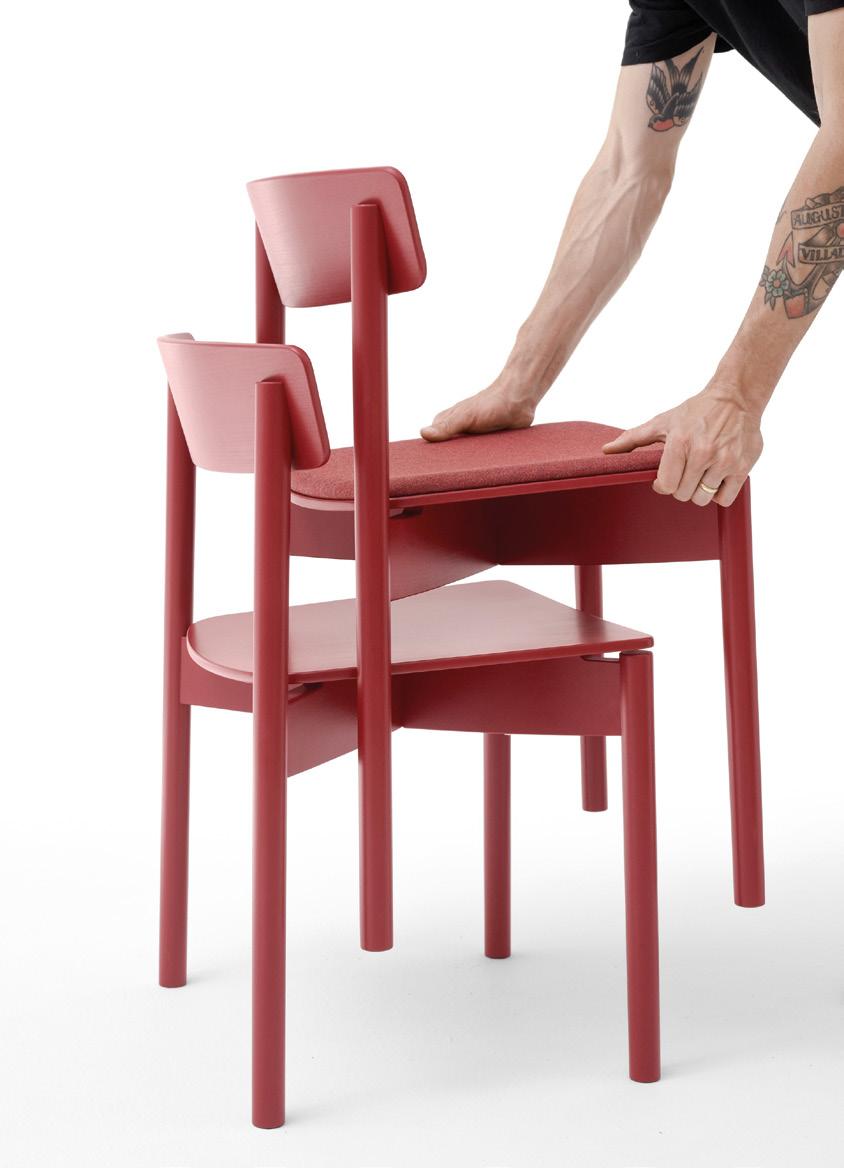
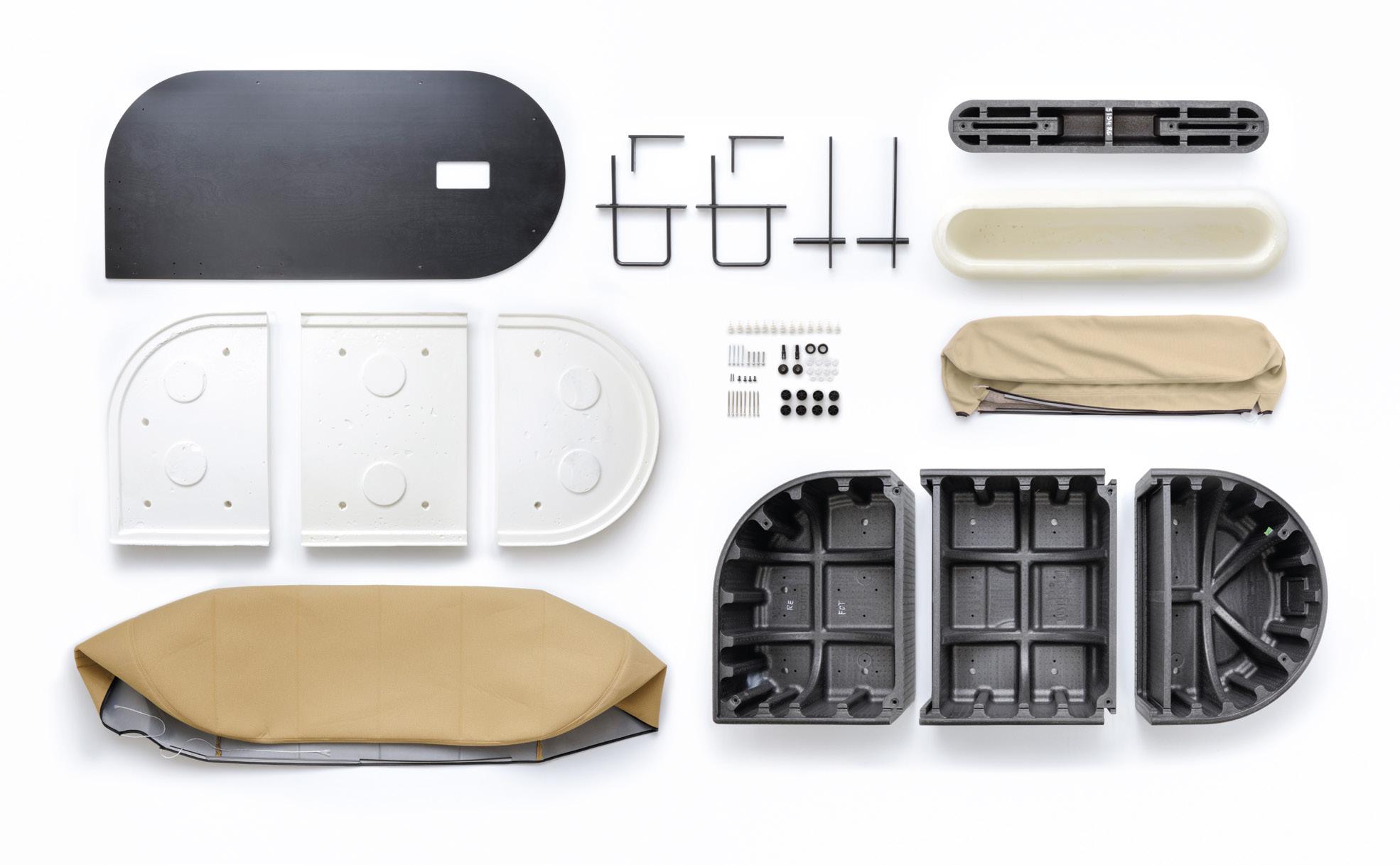
CHRISTOPH HEFTI CH
Stories & atmospheres
29.04.2026 _ ROTONDES
Christoph Hefti is a storyteller and tireless creator of captivating atmospheres. The visual worlds of the textile designer and artist often move in the realm of the mystical or even the uncanny. Figures, animals, and mythical creatures populate scenes in fantasy landscapes of forests, rivers, and volcanoes. Recurring motifs such as oversized eyes and expressive masks directly address the viewers.
His love for handmade textiles has led him, among other places, to Nepal, where he regularly produces his own series of hand-knotted carpets. There, he also rediscovered the direct interaction between design and manufacturing workshops and was fascinated by the integration of traditional craftsmanship in a contemporary context. The storytelling in carpets has a long tradition, which he embraces and enriches with his own experiential world. He also works with digital textile printing, designing large-scale curtain fabrics with imaginative motifs and repeats, and sews room-high patchwork compositions by hand.
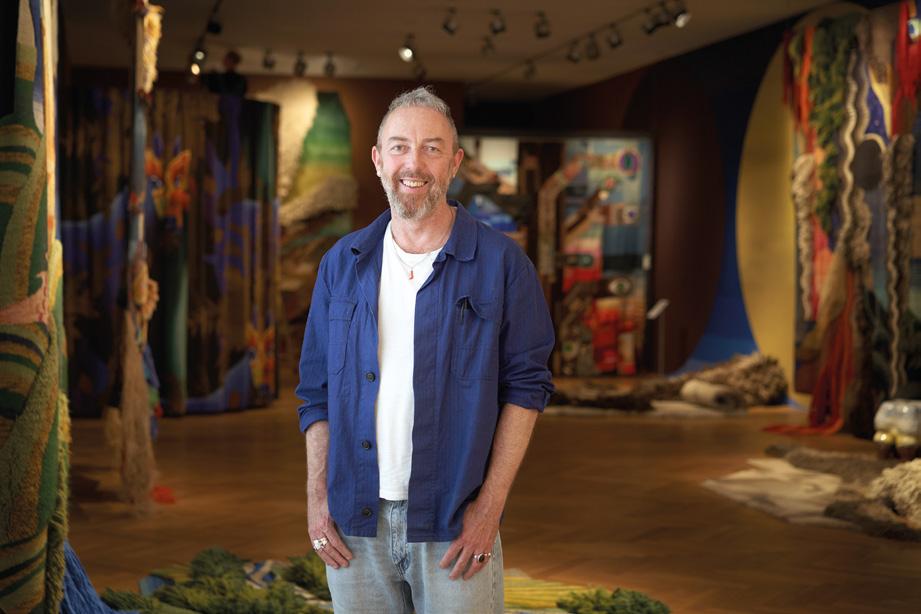
© Hans Schuermann/Gewerbemuseum Winterthur
TEXTILE DESIGN / ART
Born in Lausanne in 1967, Christoph Hefti lives and works between Brussels, Paris, and Zurich. He studied textile design at the Zurich University of the Arts (ZHdK), followed by a Master’s Degree with Distinction in Fashion at Central Saint Martins in London. Early in his career, he designed for Jean-Paul Gaultier in Paris, before working for thirteen years as a print designer and creative assistant to Dries Van Noten in Antwerp. He later collaborated with fashion houses including Lanvin, Balenciaga, and Acne Studios. In recent years, he has increasingly developed his own textile works, ranging from printed curtains and hand-knotted carpets to patchwork wall hangings.
His work is part of public collections in Switzerland. In 2009, he received the “Grand Prix Design” from the Swiss Federal Office of Culture.
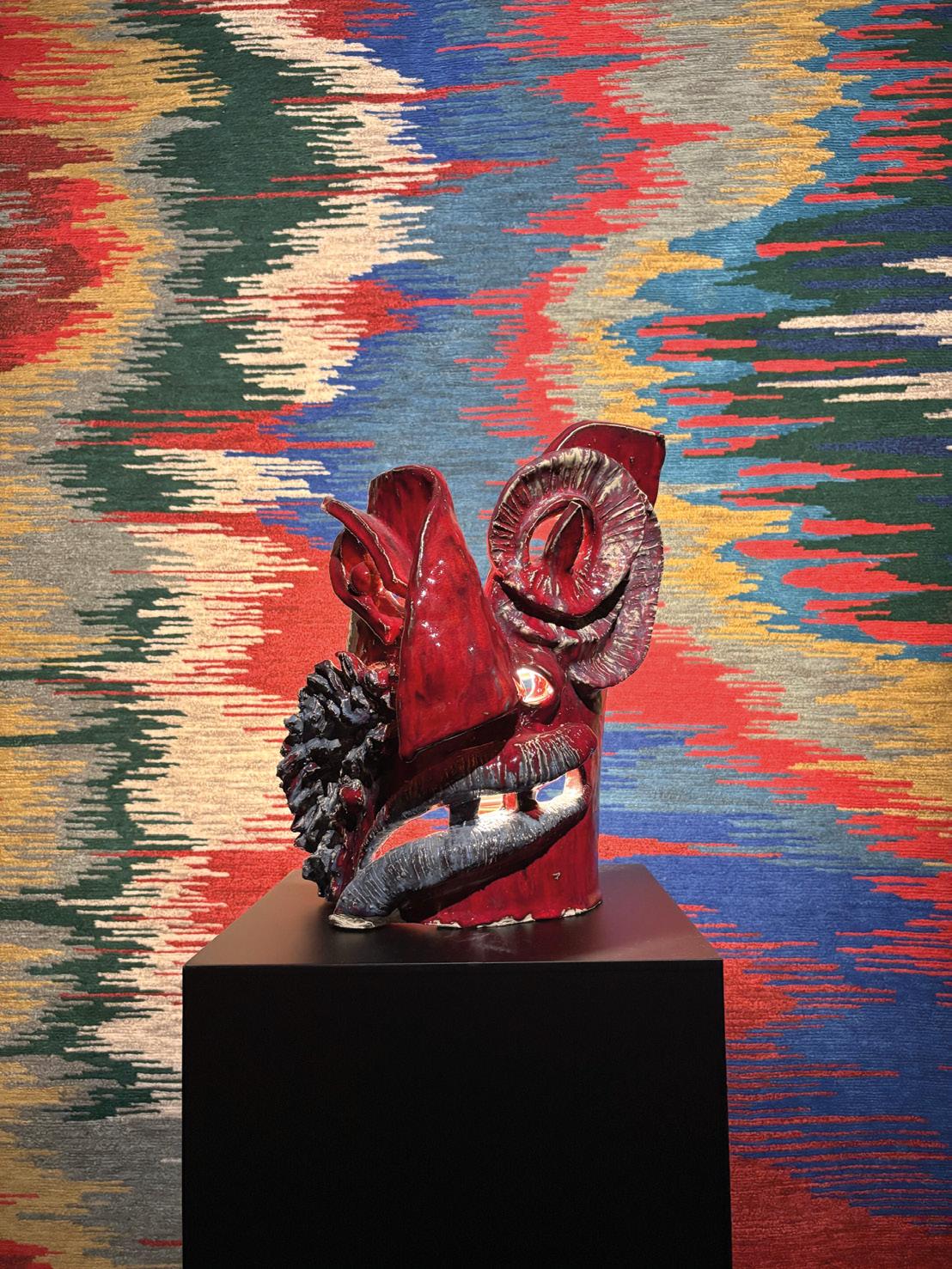
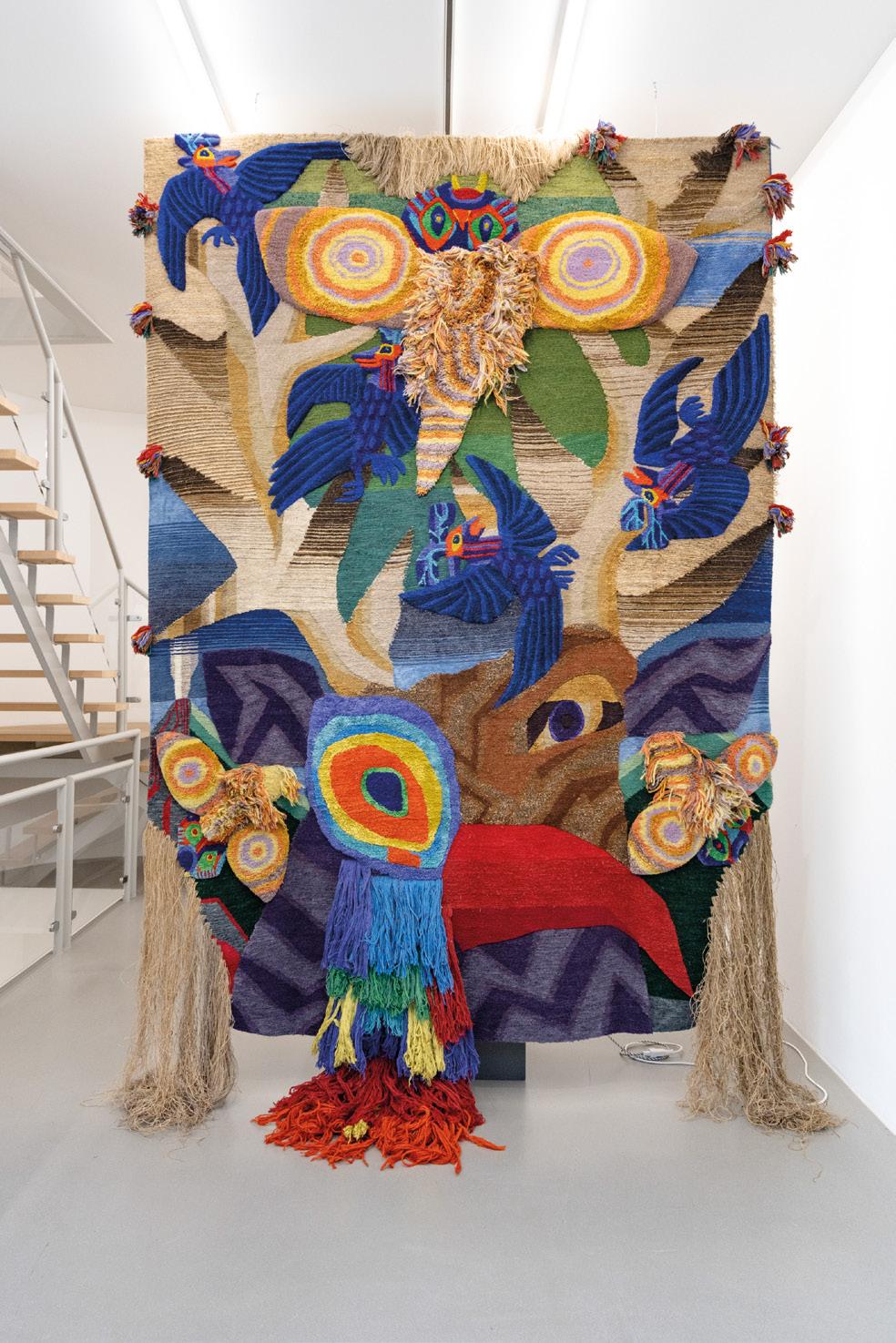

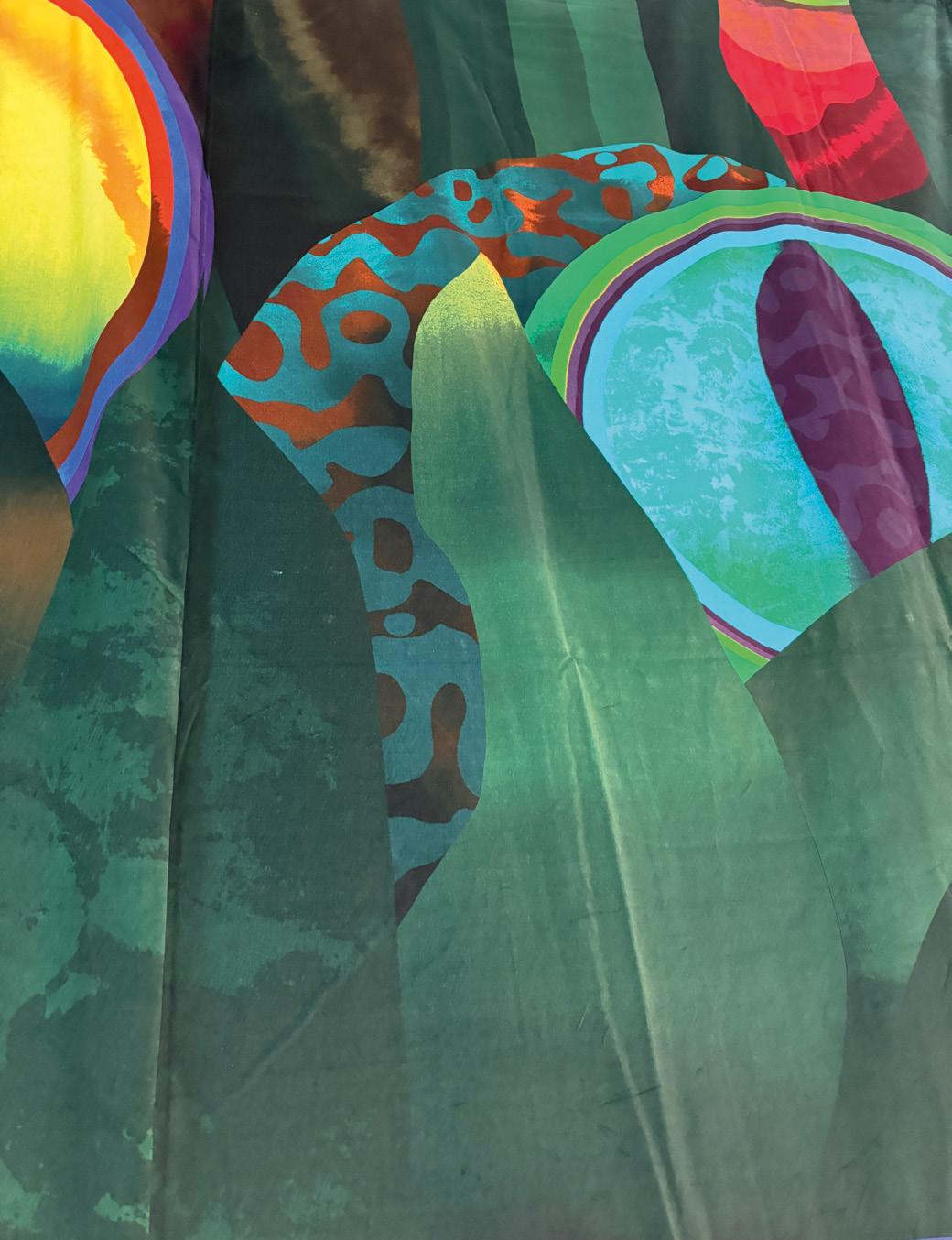

Rug: Animal Foot, 2023
Hand-knotted
Chairs: Human talking, Animal not understanding a word, 2024 Screenprinted by hand on Yrjo Kukkapuro Chairs
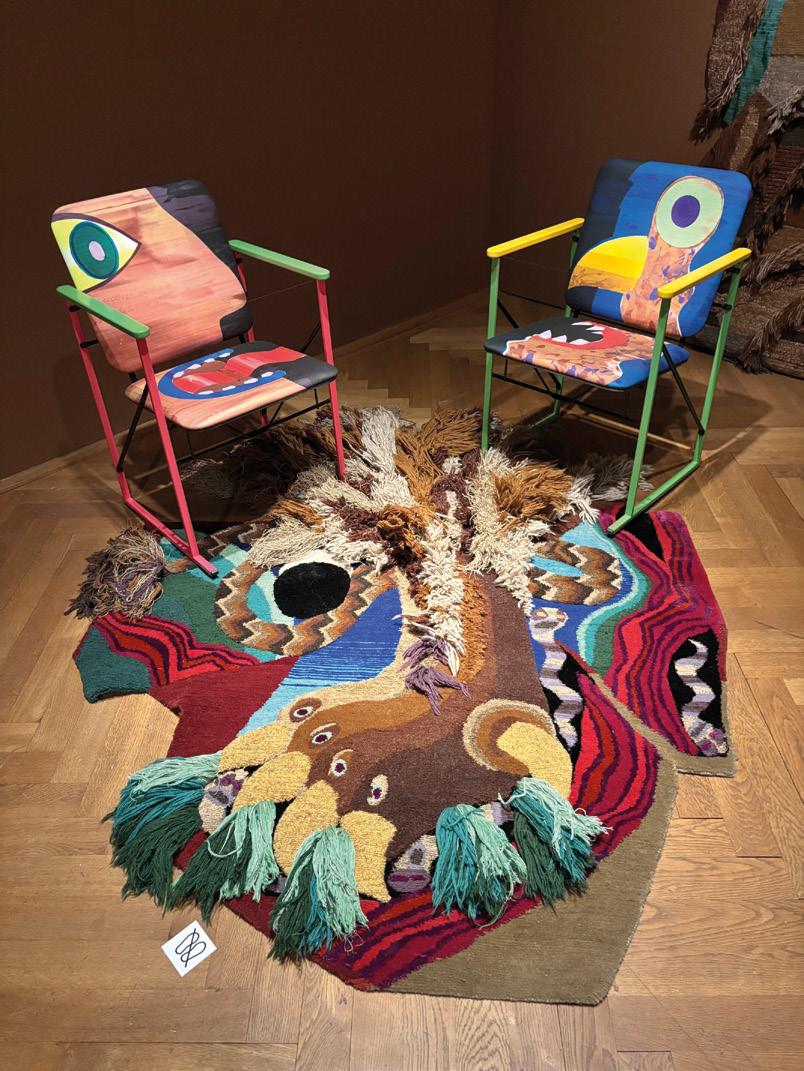
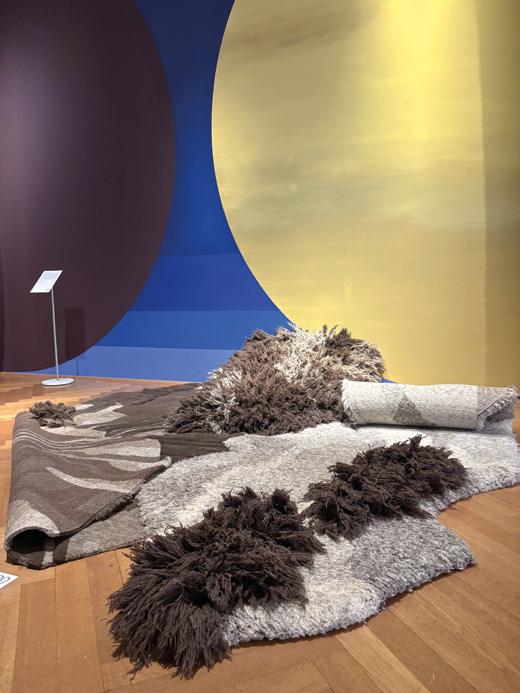
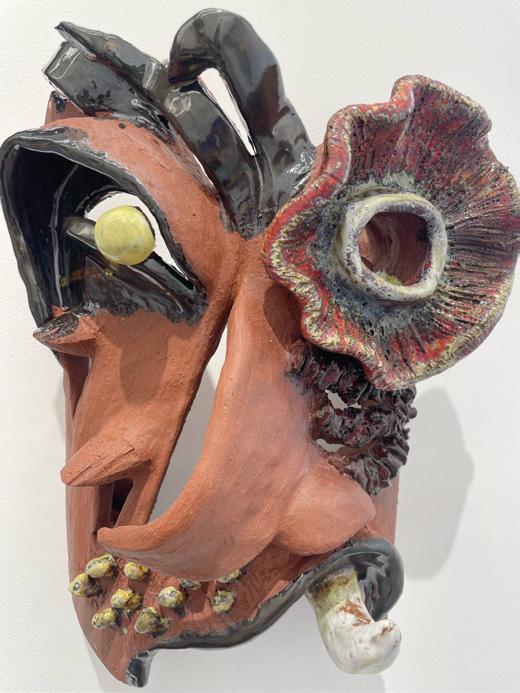
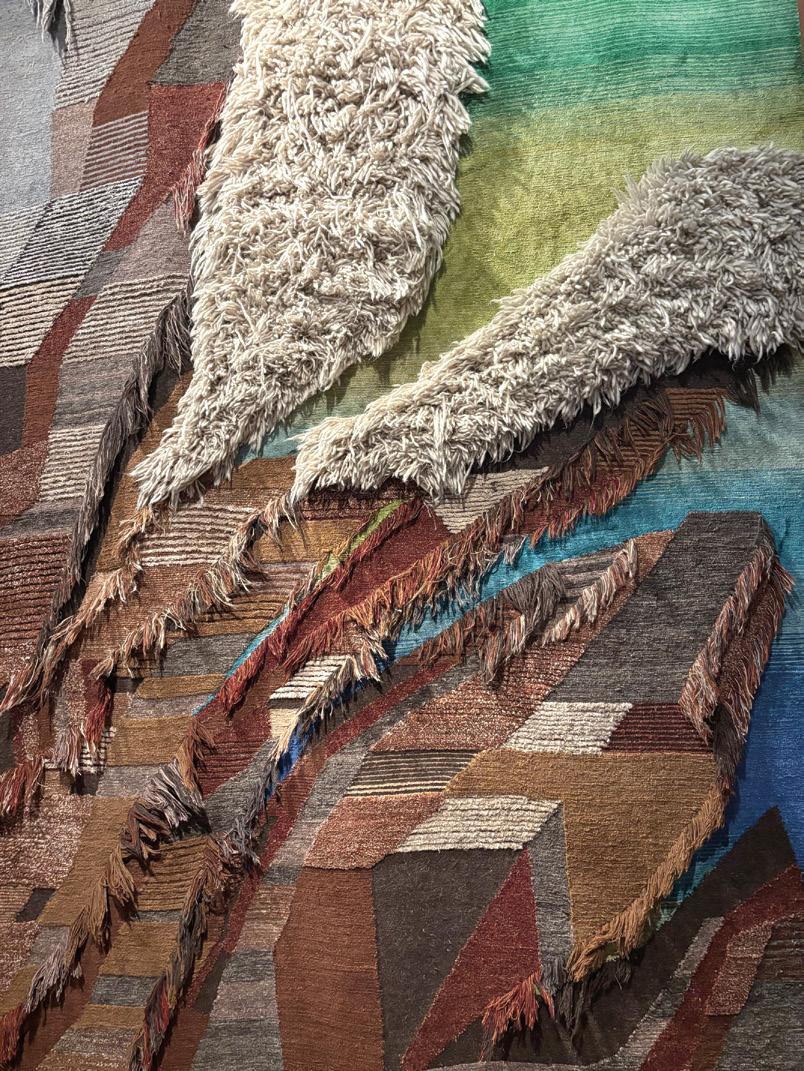
BURROWLAB DE
Developing a parametric type system
Burrowlab is parametric type design software in development by Philipp Koller that systematises font creation. While digital type design has always involved manufacturing to some extent, Burrowlab formalises the complex rules behind letterforms into a dynamic framework of logic and constraints. Rather than manually drawing paths, users control buttons, sliders and settings while glyphs are generated in real time. Letterforms are defined not by fixed outlines, but by the fluid interplay of numerical parameters and calculations.
The tool merges a rigorous, geometry-driven system with the nuanced optical refinements that define expert type design — balancing precision with the subtle imperfections that make type feel readable and alive.
This research-driven approach to parametrisation deals with both the thrill of new possibilities and innovation as well as the seemingly hopeless challenge of finding a ”theory of everything” within a system riddled with exceptions and inconsistencies. Burrowlab so far is an open ended project, constantly improving and updating the browser based software and exporting fonts along the way.
TYPE DESIGN
Burrowlab celebrates the half-finished, the glitchy, the too strange to be practical yet too compelling to discard. By leaning into the tool’s unintended quirks and extremes, you may not just crafting fonts; you might be exploring asemic typography — where letterforms dissolve into ambiguous yet intentional glyphs that tease the boundaries of language.
This updated design process creates a dataset that can be built upon: Adding effects, making variations. The letters behave less like objects and more like living systems. It’s about play and discovery with the numbers, not just with the shapes they represent.
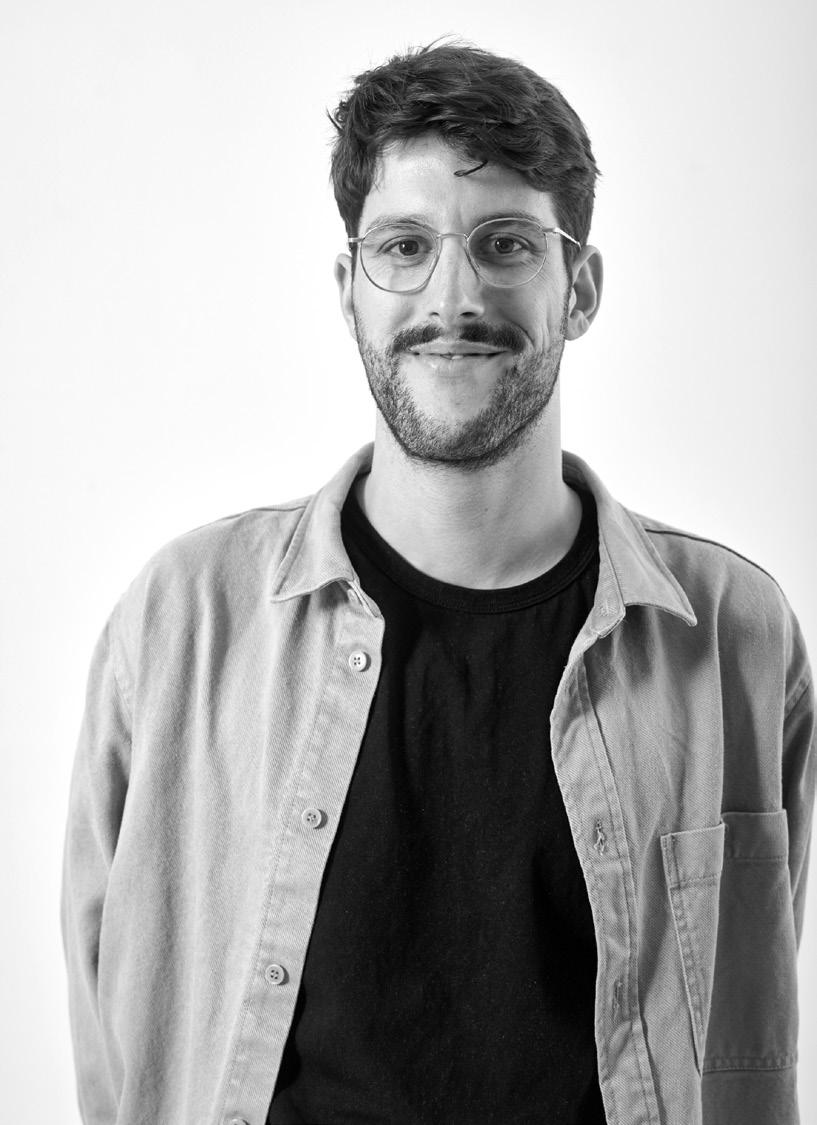

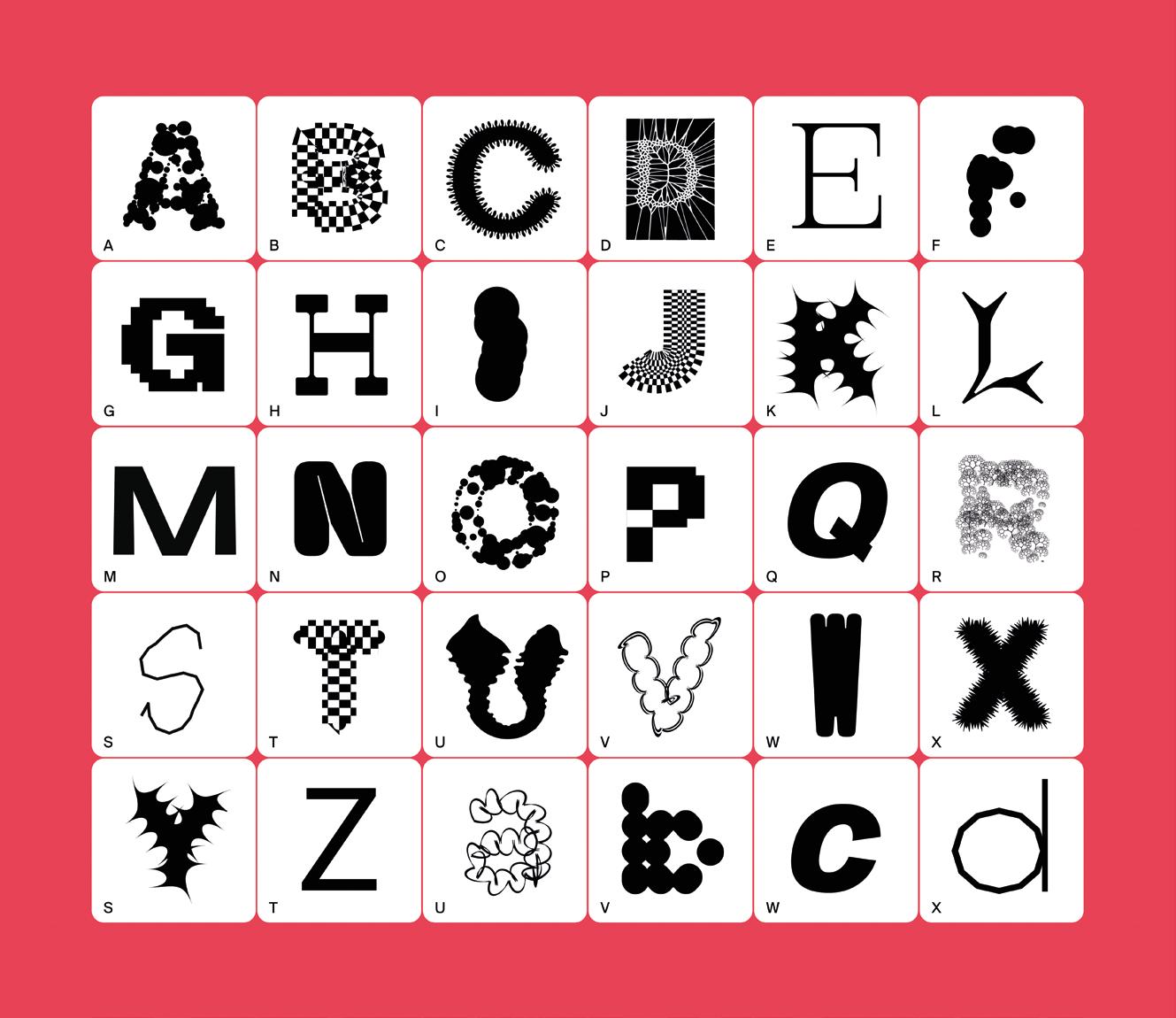
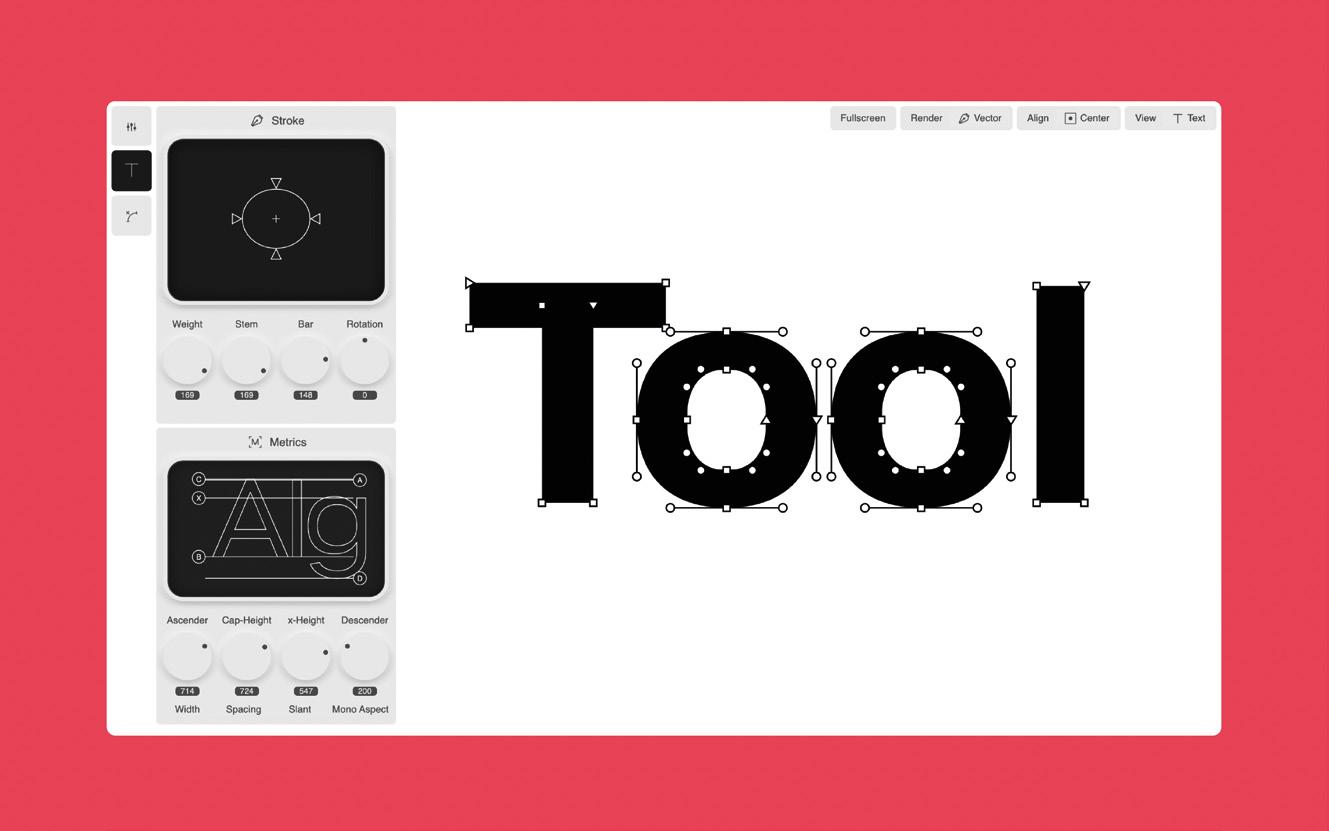
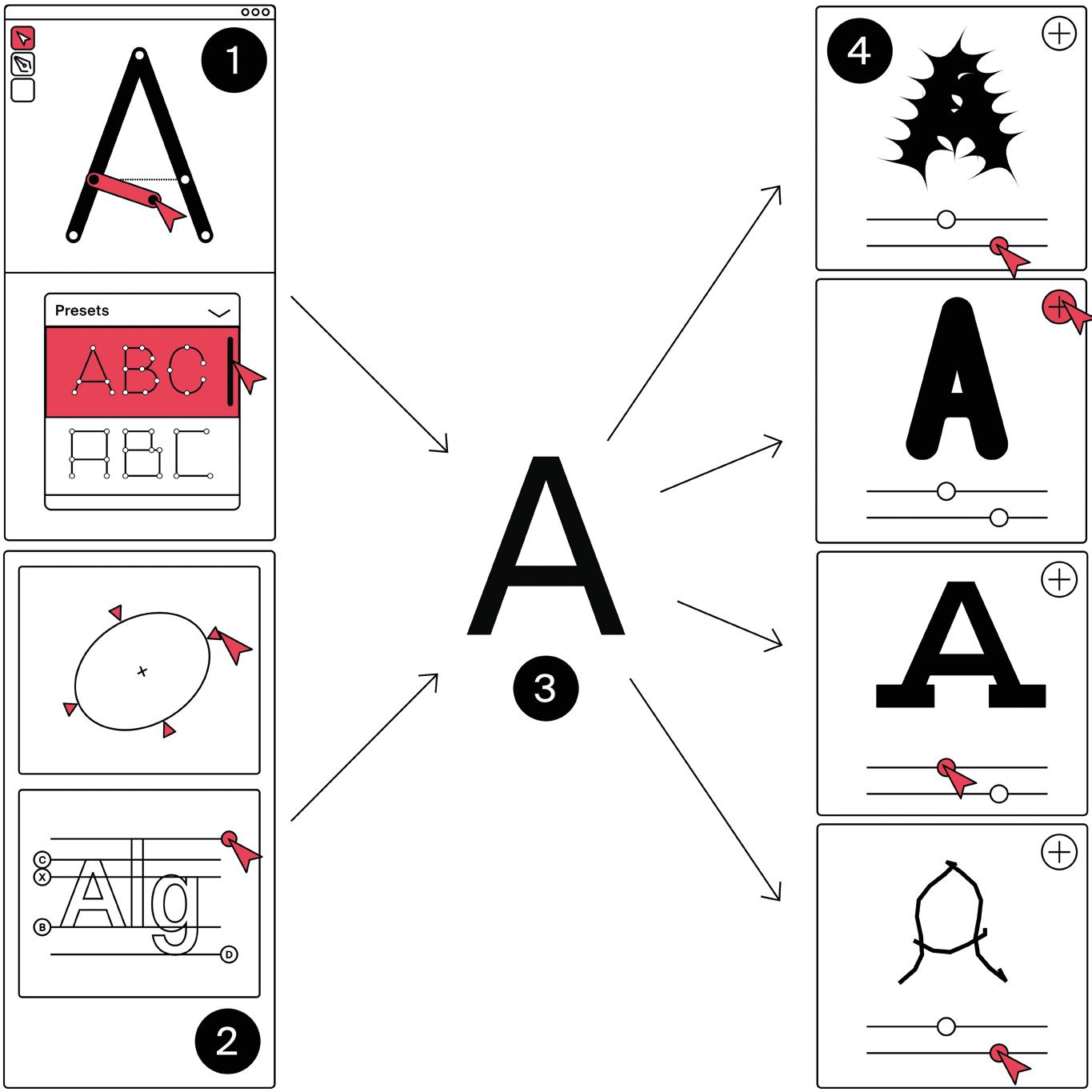
SCREENING
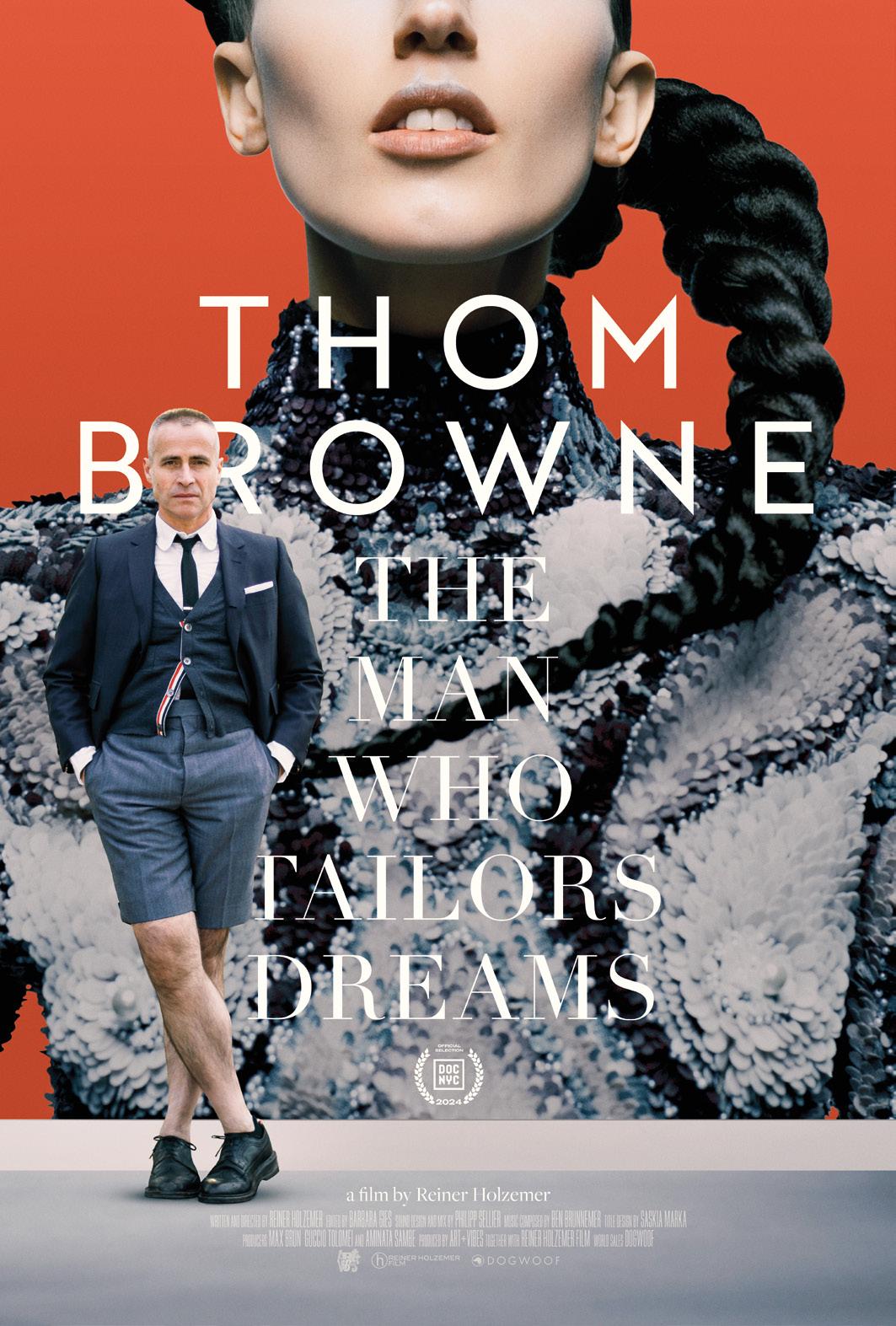
Screenings have always been an integral part of our programming. We believe that documentaries offer unique ways to discover creativity, providing new insights on design and its many expressions. Each film we choose opens up new angles of inspiration — whether through the lens of fashion, architecture, or visual culture — and invites our community to reflect on the power of design in shaping the world.
In this spirit, we are delighted to announce the screening of Thom Browne: The Man Who Tailors Dreams , a compelling portrait of the pioneering American designer who redefined the tailored grey suit and revolutionized contemporary fashion. Directed by Reiner Holzemer (2024, 1h35m), this fascinating documentary takes audiences behind the scenes, to witness Browne’s singular vision and creative journey. Join us for an evening of cinematic inspiration and design exploration.
SEASON 16
sicher nicht mehr Lazo?
DESIGN FRIENDS WOULD LIKE TO THANK ALL THEIR MEMBERS AND PARTNERS FOR THEIR SUPPORT.
GOLD MEMBERS
Carolina Albrecht-Lazo, Séverine Bauer, Koen Cloostermans, Julie Conrad, Valerio D’Alimonte, Olivier Dauvister, François de la Caffinière, Viktor Dick, Mauro Doro, Runa Egilsdottir, Claudia Eustergerling, Claire Flammang, Heike Fries, Ludovica Gammaitoni, Charline Guille, Vera Heliodoro, Vinzenz Hoelzl, Reza Kianpour, Anne Kieffer, Sylvain Kirsch, Mike Koedinger, Guido Kröger, Françoise Kuth, Elodie Lenoir, Jacques Lorang, André Michaux, Riccardo Perello, Michel Petit, Carlo Polfer, Hyder Razvi, Sascha Reinert, Jean-Paul Reuland, David Rosner, Paul Schwebach, Olga Silva, Silvano Vidale, Martine Wagener, Laurence Winandy, Patrick Wirtz, Anabel Witry
CORPORATE MEMBERS
Bakform, Bureau Moderne, kaell architecte, Soulmates, Marc Wilmes Design, OAI, Witry & Witry
IN COLLABORATION WITH PARTNERS
A special thank you to Mudam for 16 seasons of support
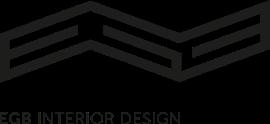

SERVICE PARTNERS
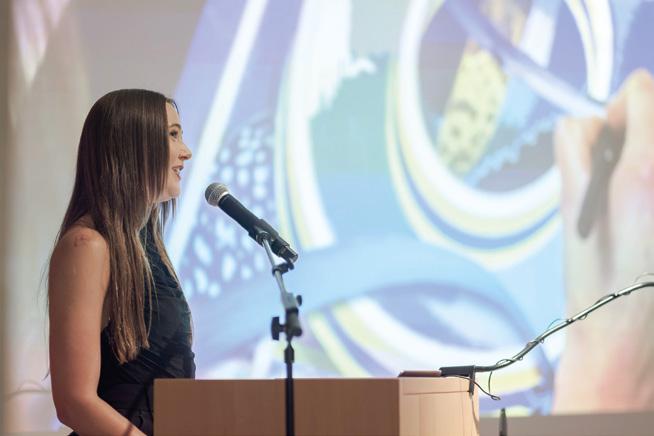
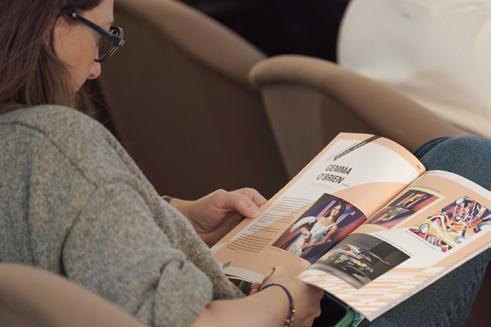
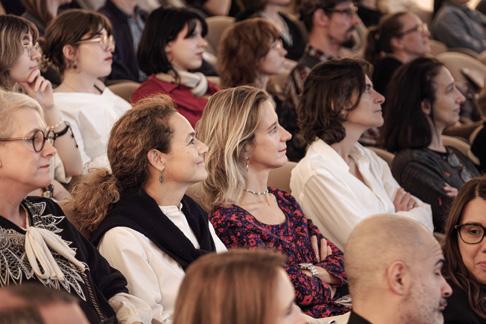
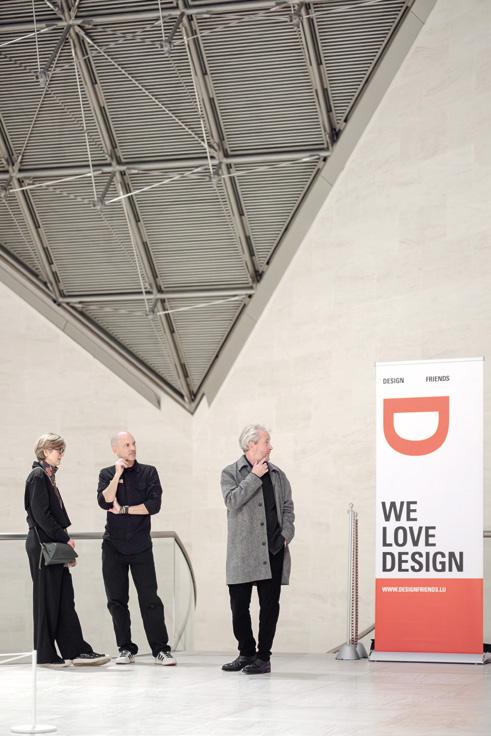
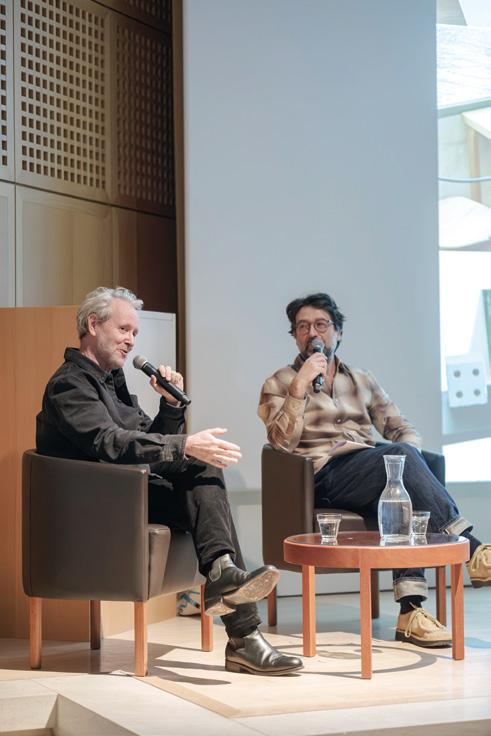
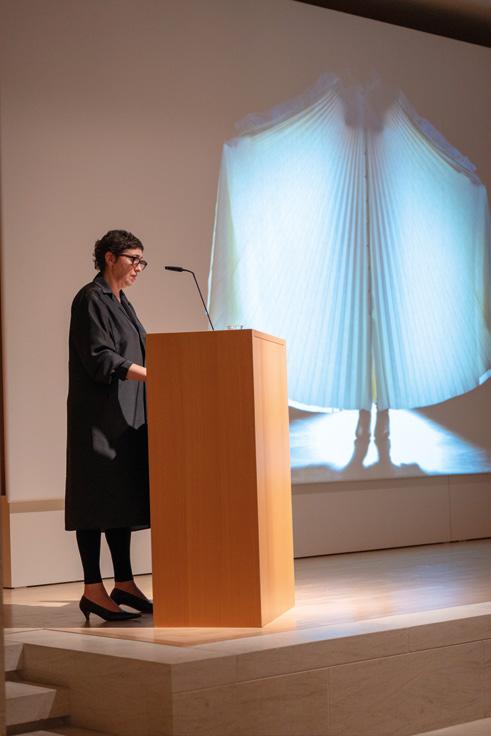
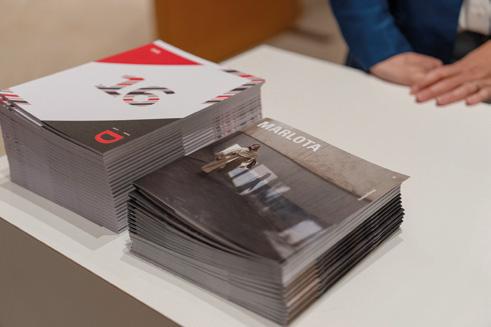
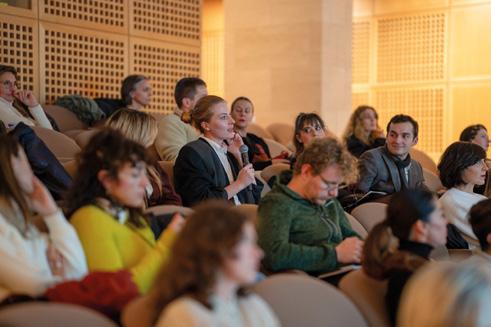


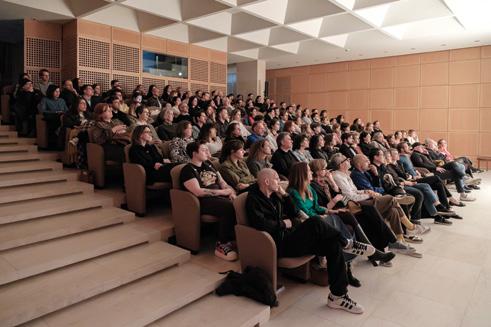
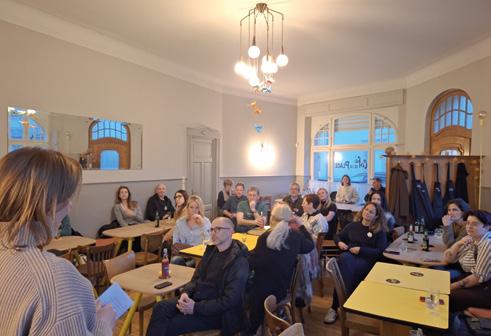
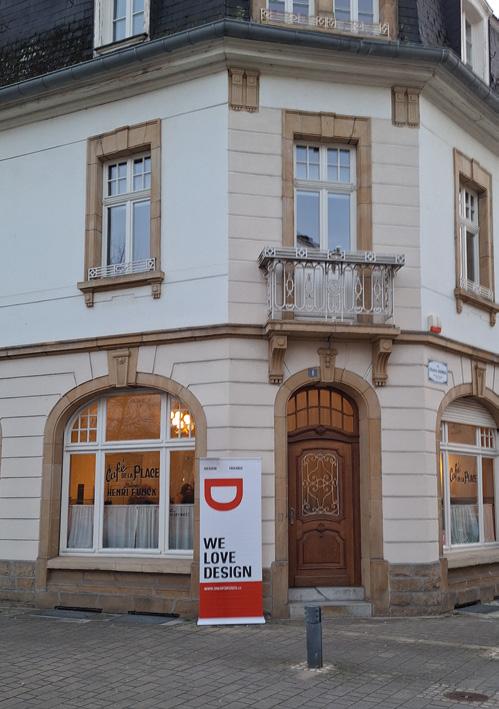
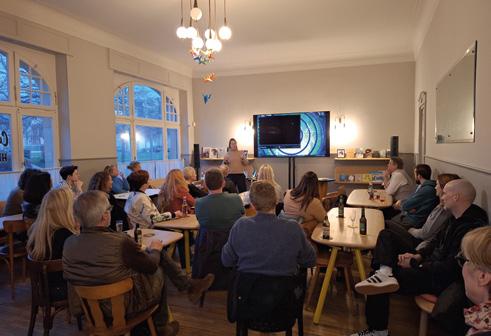

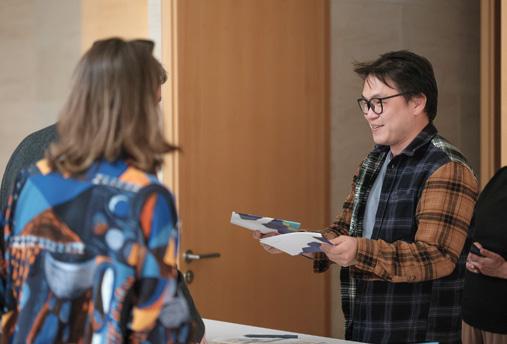
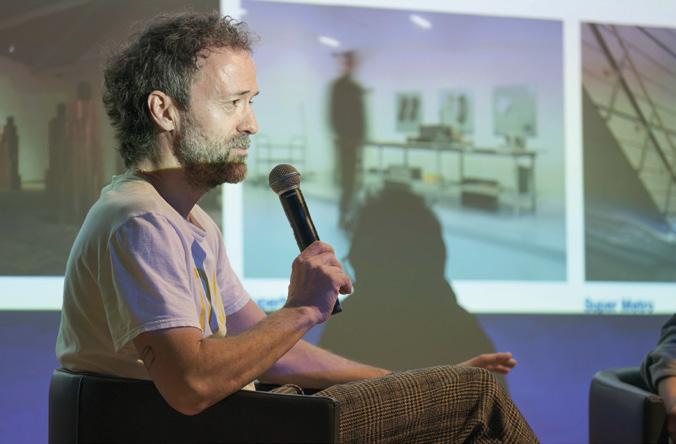
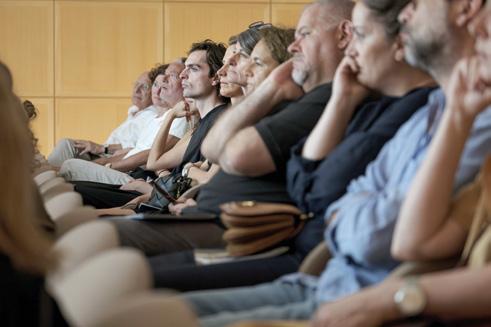
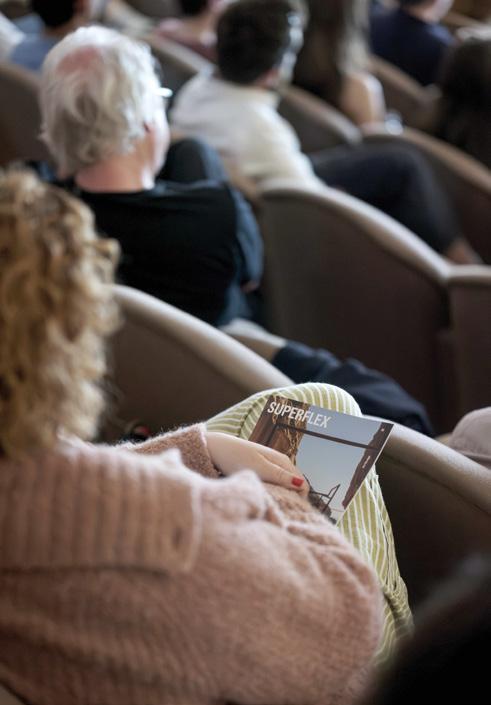
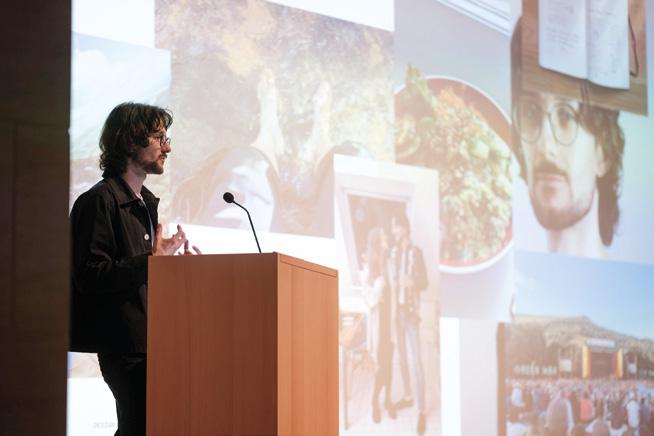
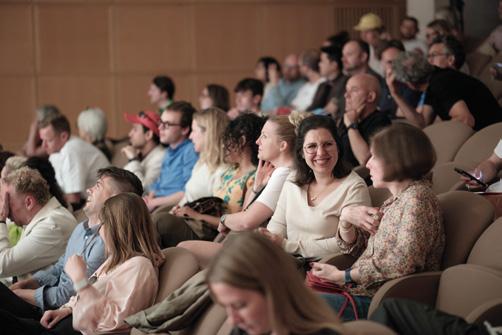
since 19 7 9
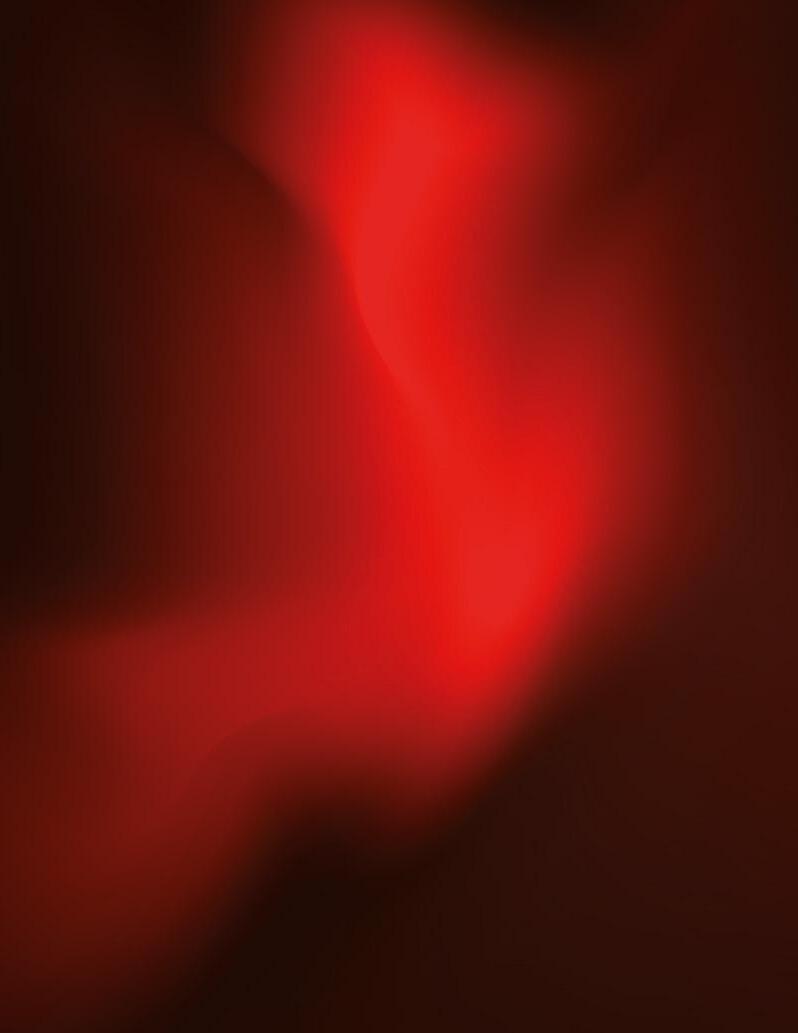
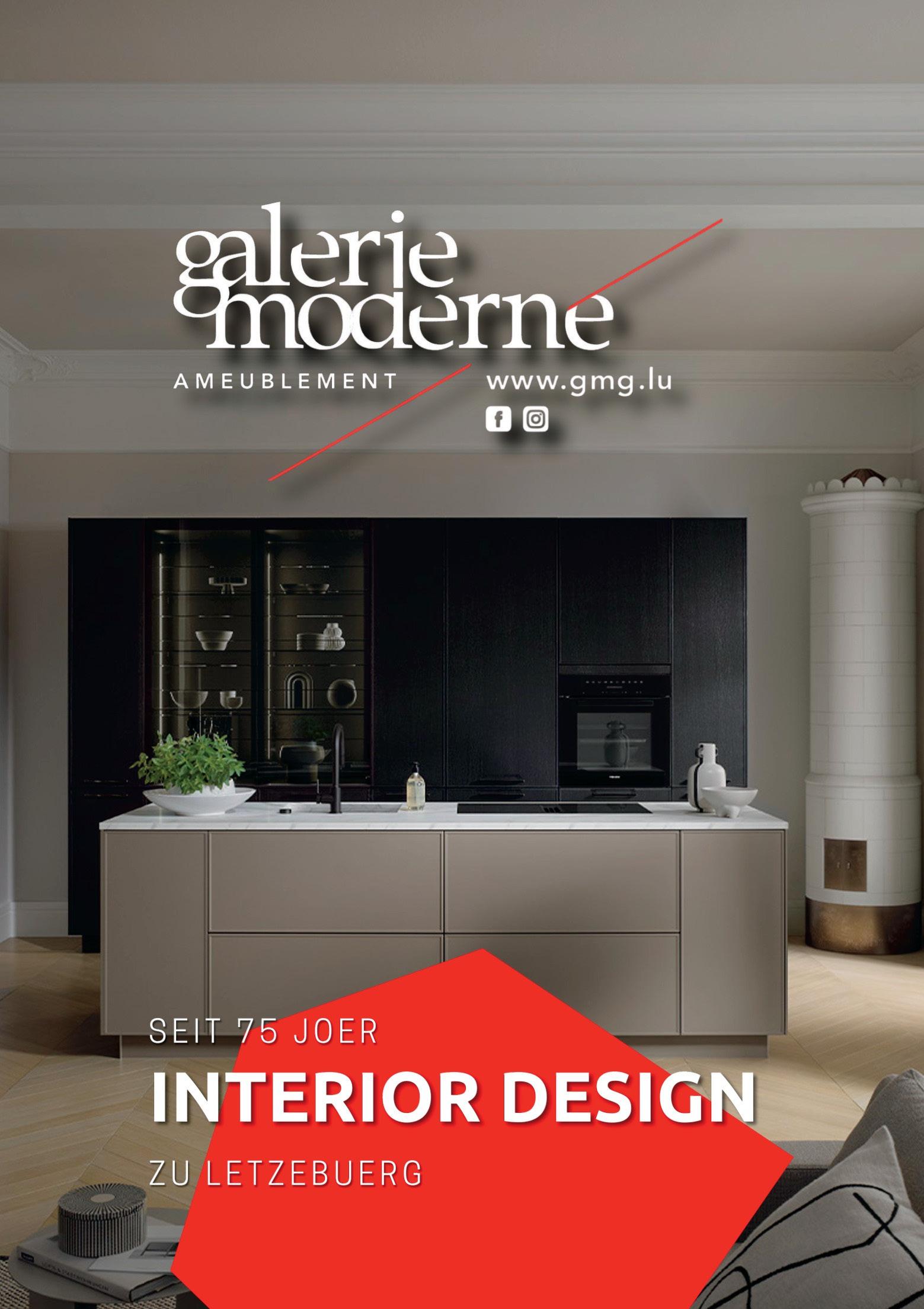
Unlocking Research Intelligence
Research is valuable – but only if it can be used and reused efficiently. Our expert Sabeth Wiese explains how organizations can make better use of their insights through systematic knowledge management and AI-powered repositories.
You work with research results and insights on a daily basis. What do you find particularly fascinating about this work?
Sabeth Wiese: What I love about design is being immersed in new products and ways of life. As a business graduate, I’m interested in how decisions are made, and research helps with that. It’s great when our reports help clients make decisions and trigger ‘aha’ moments.
What are the challenges of creating results that trigger these aha moments?
Sabeth: An ‘aha’ moment doesn’t just mean finding insights interesting, but realizing: What can I do with this now? It’s about identifying opportunities and risks and planning the next step. How this happens depends on the research type and client needs. In UX testing, designers and product owners are usually present. A to-do list often forms in their minds during the test. As researchers, we verify or challenge those thoughts. It’s fast and solution-focused, fitting agile projects. However, overarching insights such as user life situations can fall by the wayside. Exploratory research like need segmentation is different: it’s about the bigger picture. We present complex insights in a clear way. That’s especially helpful for strategy and product development and easier to reuse across projects.
Research & User Centricity Strategy & Service Design Project & Design Management
Subscribe to Sensity’s newsletter for inspiration and updates.
https://www.sensity.eu/newsletter
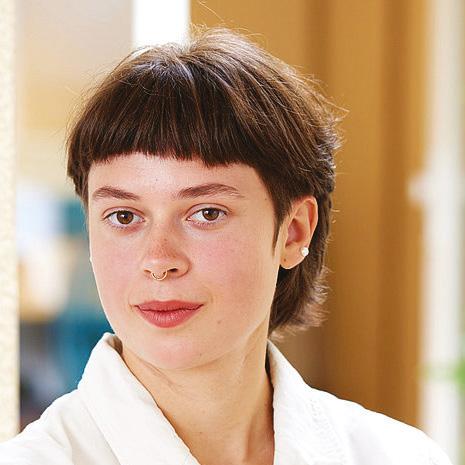
What do teams need to work effectively with insights – whether they are using them for new projects or reusing them?
Sabeth: Reports should be easy to grasp, with key insights and practical relevance. Appealing and “snackable” content sticks better, especially if it’s unusual or humorous.
To enable reuse, insights should live in a repository that is both accessible and secure. Whether results are reused depends on many factors: people’s preference for new research, team structures, smart systems that surface existing data, incentives, and the ability to assess what’s still relevant.
Let’s look at solutions: What can be done and what role does technology play?
Sabeth: Start with a repository that can grow with the organization. Better to start small and expand step by step. AI provides a better interface for accessing data: faster, more pleasant, and more likely to be used. But it must be applied carefully because of data protection, biases, and cost matter. Beyond tech, you need strong culture, processes, incentives, and skills. If you collect data, also document the associated processes to identify best practices and optimize – keywords here are design and research ops.
If we look at the challenges again: What should you pay attention to for the implementation to work?
Sabeth: Three major hurdles: Out of perfectionism, no repository at all because the budget for the optimal solution is lacking – better to start small. A repository exists, but nobody uses it because it’s not integrated. Strengthen skills with workshops, increase visibility by celebrating successes, and find promoters.
Communication & Brand
Content & Quality
UX & CX Design
Offices in Luxembourg and Cologne www.sensity.eu
Sabeth Wiese Insights & Research Consultant at Sensity
A repository is used, but the data is out of date – dangerous with AI, which is often opaque. Our clients approach repositories very differently – there is no one perfect solution. We support improving data reuse.
“Strengthen
skills with workshops, increase visibility by celebrating successes, and find promoters.”
You mentioned earlier that there are psychological factors involved. Would a smart interface increase the fun factor of using existing data? Or is that wishful thinking?
Sabeth: AI makes working with existing data more pleasant. Hardly any question is researched twice with the same focus, so old reports require careful reading. AI could access underlying data directly and tailor results more closely to my use case. Eureka moments come faster – and feel more rewarding.
What advantages do you see when companies systematically collect data and make it accessible to everyone?
Sabeth: Advantages exist on many levels. Efficiency increases, knowledge transfer between touchpoints improves, consistency grows, and the persuasiveness of a brand strengthens. Reusing data speeds things up – no need to conduct new interviews or studies first – and makes trends easier to identify. In the current climate, companies could save research costs or use freed-up budget to dive deeper into interesting areas. Used well, insights strengthen customer focus, raise innovation success, improve quality, and ultimately contribute to competitiveness.
PREVIOUS PUBLICATIONS
01 CHRISTOPH NIEMANN Illustration Design 2009
02 MICHEL MALLARD Creative Direction 2009
03 FUN FACTORY Product Design 2009 04 ANDREAS UEBELE Signage Design 2010 05 HARRI PECCINOTTI Photography 2010
06 KUSTAA SAKSI Illustration Design 2010
07 5.5 DESIGNERS Product Design 2011 08 NIKLAUS TROXLER Graphic Design 2011
JOACHIM SAUTER Media Design 2011 10 MICHAEL JOHNSON Graphic Design 2011
Design
SCHNEIDER Sound Design 2012
LOMBARDO Editorial Design 2012 15 SAM HECHT Industrial Design 2012 16 SONJA STUMMERER & MARTIN HABLESREITER Food Design 2012 17 LERNERT & SANDER Art & Design 2013 18 MURAT GÜNAK Automotive Design 2013
19 NICOLAS BOURQUIN Editorial Design 2013
20 SISSEL TOLAAS Scent Design 2013
21 CHRISTOPHE PILLET Product Design 2013
22 MIRKO BORSCHE Editorial Design 2014
23 PAUL PRIESTMAN Transportation Design 2014 24 BRUCE DUCKWORTH Packaging Design 2014 25 ERIK SPIEKERMANN Graphic Design 2014 26 KLAUS-PETER SIEMSSEN Light Design 2014
27 EDUARDO AIRES Corporate Design 2015 28 PHILIPPE APELOIG Graphic Design 2015 29 ALEXANDRA MURRAY-LESLIE
High Techne Fashion Design 2015
30 PLEIX Video & Installation Design 2016
31 LA FILLE D’O Fashion Design 2016 32 RUEDI BAUR Graphic Design 2016
ROMAIN URHAUSEN Product Design 2016
34 MR BINGO Illustration Design 2016
35 KIKI VAN EIJK Product Design 2016
36 JEAN-PAUL LESPAGNARD Fashion Design 2017
37 PE’L SCHLECHTER Graphic Design 2017
38 TIM JOHN & MARTIN SCHMITZ Scenography Design 2017
39 BROSMIND Illustration Design 2017
40 ARMANDO MILANI Graphic Design 2017
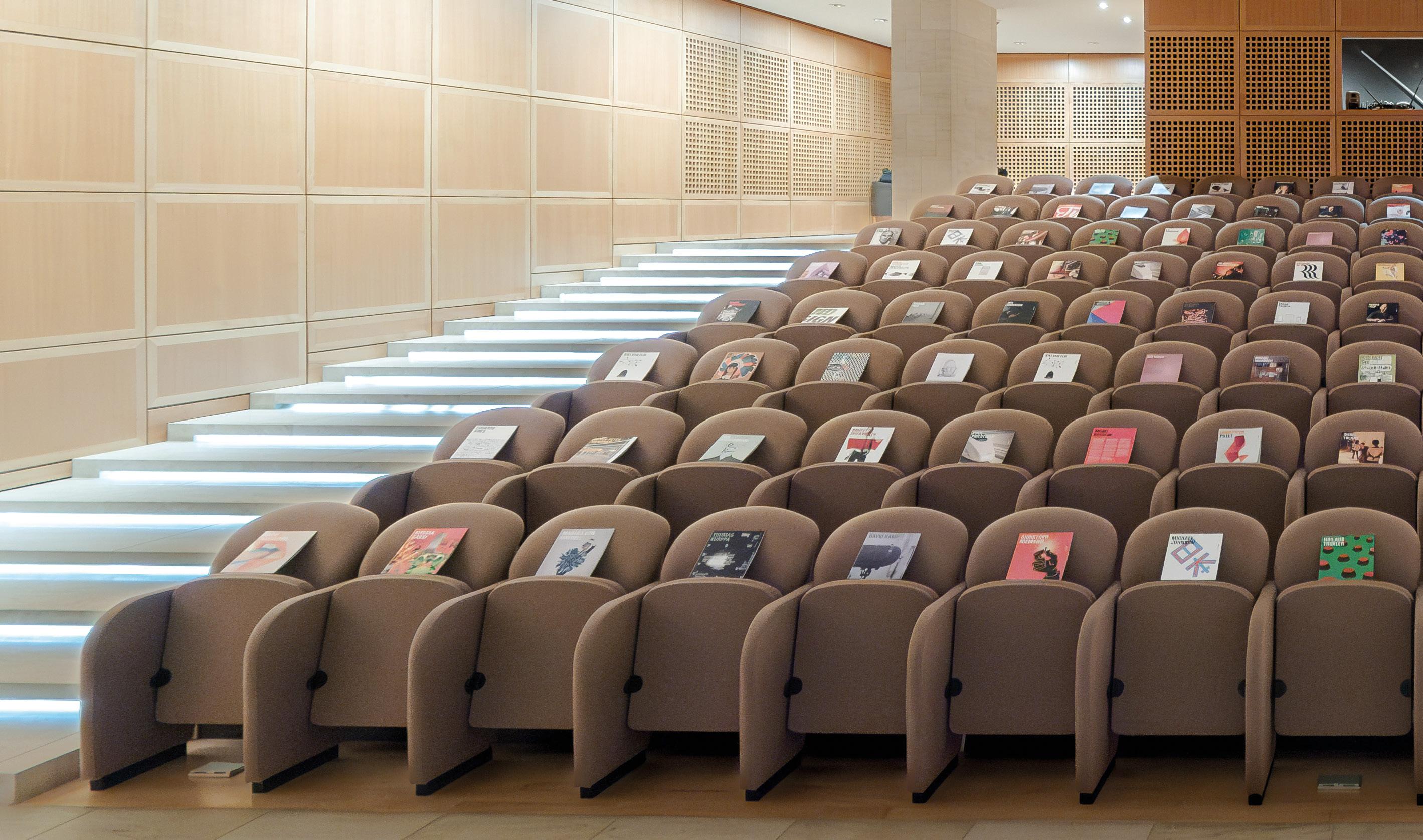
41 LAURA STRAßER Product Design 2017
42 PHOENIX DESIGN Industrial Design 2018
43 UWE R. BRÜCKNER Scenography Design 2018
44 BROUSSE & RUDDIGKEIT Design Code 2018
45 ISABELLE CHAPUIS Photography Design 2018
46 PATRICIA URQUIOLA Product Design 2018
47 SARAH-GRACE MANKARIOUS Art Direction 2018
48 STUDIO FEIXEN Visual Concepts 2019
49 FRANK RAUSCH Interface Design 2019
50 DENNIS LÜCK Designing Creativity 2019
51 IAN ANDERSON Graphic Design 2019
52 FOLCH STUDIO Strategic Narrative Design 2019
53 MARC TAMSCHICK Spatial Media Design 2020
54 TYPEJOCKEYS Type Design 2020
55 MOTH Animation Design 2021
56 JONAS LINDSTRÖM Photography 2021
57 VERONICA FUERTE Graphic Design 2021
58 CHRISTOPHE DE LA FONTAINE Product Design 2021
59 DAVID KAMP Sound Design 2021
60 THOMAS KURPPA Brand Design 2021
61 NEW TENDENCY Product Design 2022
62 MARTHA VON MAYDELL Illustration Design 2022
63 STUDIO KLARENBEEK & DROS Design Research 2022
64 JOUPIN GHAMSARI Photography Design 2022
65 LOTTERMANN AND FUENTES Photography Design 2022
66 SUPER TERRAIN Graphic Design 2022
67 EIKE KÖNIG Art Design 2023
68 CHRISTOPHER NOELLE Light Design 2023
69 DENNIS HINZE Sport Fashion Design 2023
70 KLASIEN VAN DE ZANDSCHULP Interactive Design 2023
71 VALENTIN VODEV Industrial Design 2023
72 GERMANS ERMIČS Sculptural Design 2023
73 MADE BY JAMES Type & Logo Design 2024
74 SNASK Branding & Video 2024
75 CRAFTING PLASTICS! STUDIO Design Research 2024
76 STUDIO BRUCH Graphic Design 2024
77 GEMMA O’BRIEN Graphics & Lettering 2024
78 MARLOTA Fashion Design 2024
79 RONAN BOUROULLEC Product Design 2025
80 FRANCESCO FRANCHI Editorial & Information Design 2025
81 FIELD.IO Experiential Design 2025
82 SUPERFLEX Public Space Design 2025

MEMBERSHIPS
ORGANISATIONS, COMPANIES AND INSTITUTIONS
INDIVIDUALS
Gold Members — 100 €
Extra Expression of Appreciation
Extra Support of Design Friends and their program
Incl. six catalogues signed by the designers
Incl. vouchers for two drinks on special events
Incl. a meet-and-greet with the designers during post-talk dinner (by individual participation)
Mention on www.designfriends.lu and annual publication
Members — 30 €
& Student Members — 15 €
Expression of Appreciation
Support of Design Friends and their program
Incl. six catalogues
Incl. voucher for one drink on special events
Memberships are available online www.designfriends.lu
Sponsor packages include 10 nominative memberships and more. Please contact us for details, office@designfriends.lu
Standard Corporate Memberships — 500 €
Includes 10 nominative Memberships (staff only)
Extra Expression of Appreciation
Extra Support of Design Friends and their program
Incl. 10 x six catalogues signed by the designers
Incl. 10 x vouchers for one drink on special events
Mention on www.designfriends.lu and annual publication
Small Standard Corporate Memberships — 250 €
Includes 3 nominative Memberships (staff only)
Extra Expression of Appreciation
Extra Support of Design Friends and their program
Incl. 3 x six catalogues signed by the designers
Incl. 3 x vouchers for one drink on special events
Mention on www.designfriends.lu and annual publication
(valid Season 17, from September 2025 to July 2026)
COLOPHON
Published by Design Friends asbl
CONCEPT
Heike Fries, Silvano Vidale
LAYOUT
Mara Kieffer
EDITED BY
Heike Fries — supported by
Anabel Witry and Mark Penfold
COORDINATION
Heike Fries
PRINTED BY
Imprimerie Schlimé
ISBN 978-2-919829-11-8
Printed in Luxembourg
© Design Friends ASBL, Luxembourg 2025 (Europe)
With the support of
Design Friends asbl
32, rue du Pont
L-6471 Echternach
A sincere thank you to Reza Kianpour (seasons 11-16) and Vera Heliodoro (season 16) for their commitment as board members, and to Zoë Mondloch for her contribution as counselor (season 16).
SEASON 17
BOARDMEMBERS
Anabel Witry, President
Heike Fries, Secretary
Guido Kröger, Treasurer
Hyunggyu Kim
COUNSELORS
Vera Heliodoro
Hyder Razvi
Olga Silva
Silvano Vidale
